There are a lot of narratives in the Seinen genre that are unique and different. This genre stands out among the rest.
Compared to contemporaries like shounen, seinen aims for a more mature audience. Specifically, works in this sector are marketed and targeted at young adult men, though the audience can be much broader.
In general, seinen series are less focused on optimistic shounen themes and instead focus on more morally ambiguous stories where anything can happen. As with any other anime show, seinen anime also has regular elements, but one thing it does not lack is a compelling plot. The plot of every seinen anime is always story-driven.
Animes that fall under this category can cover topics like action and science fiction, as well as more grounded subjects like politics and sports. Within every genre, there are pieces that stand out and those that blend in. This list will look at some of the best.
1. Monster
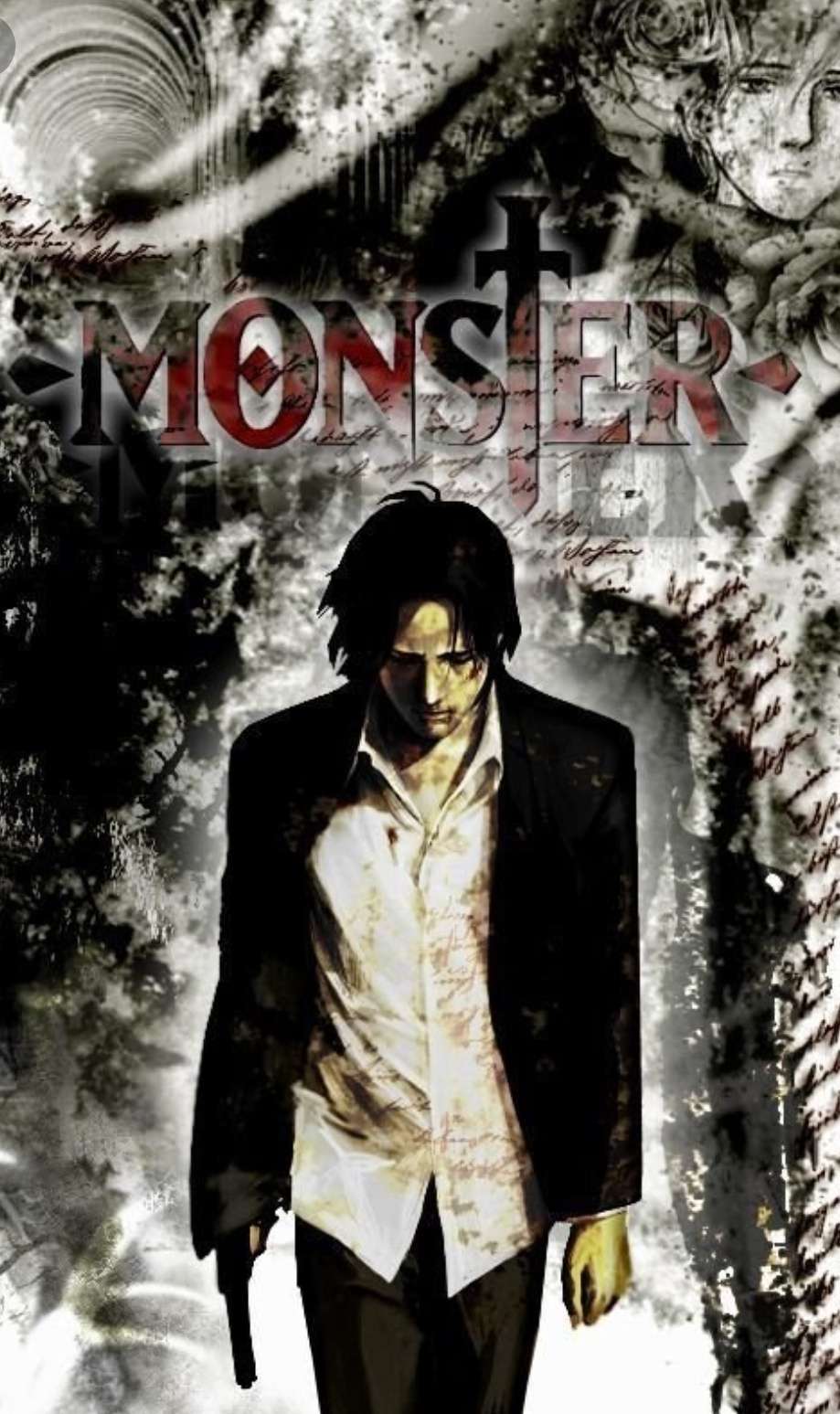
The elite neurosurgeon Kenzou Tenma is engaged to his hospital director’s daughter and is well on his way to ascending the hospital hierarchy. One night, Dr. Tenma’s life is forever changed by a seemingly small event. As he is preparing to operate on a patient, the hospital director calls him and instructs him to perform on a famous performer instead.
His colleagues, fiancée, and the hospital director congratulate him on his accomplishment; however, by switching, a poor immigrant worker died, causing Dr. Tenma to have a crisis of conscience.
When a similar situation arises, Dr. Tenma chooses to operate on Johan Liebert rather than the mayor of the town. It is unfortunate that this choice has serious ramifications for Dr. Tenma, one of which is losing his social standing.
Due to the mysterious deaths of the director and two other doctors, Dr. Tenma’s position has been After being found not guilty, he is released and becomes the director of the hospital.
The monster Dr. Tenma operated on nine years prior resurfaces when Dr. Tenma saves the life of a criminal. Once again, he faces the same monster he operated on. As a result, he is now on a quest to make amends for the havoc caused by the one he saved.
In Monster, the writing is exceptional. With its slow pace, the story cleverly captures the viewer’s attention with moments of shock, awe, and depravity, which are then accompanied by well-executed moments of anticipation and proper denouement. After establishing the setting and establishing many of the characters, the series begins a rollercoaster of action, suspense, and character development.
2. Vinland Saga

Thorfinn heard stories of old sailors traveling the ocean and reaching the legendary Vinland. This place is warm and fertile-not at all like the town in Iceland where he was born, nor like his current life as a mercenary.
Now, war is his home. Though Thorfinn’s father once told him, “You have no enemies, nobody does. There is nobody who it’s okay to hurt,” as he grew, he knew that nothing was further from the truth.
Every year, the war between England and the Danes worsens. It has become a common occurrence for the Viking mercenaries to die. Any alliance will result in a massive shift in power, and the Vikings are eager to make their mark and take any spoils they can.
Askeladd, the man who murdered Thorfinn’s father, must be killed by Thorfinn in the chaos. It seems that the vikings’ only paradise is the era of war and death that rages on.
Vinland Saga carries a profound feeling. No matter how accurate the events are, you are watching monumental history unfold. Even though it can be frustrating at times, it’s engrossing in the end. Vinland Saga is about Viking pride, loss of innocence, betrayal, and the quest for the biggest bounty.
As opposed to focusing only on the main characters, the script often follows a number of mercenaries; they talk about their past battles and share their thoughts on other characters. A well-written story can be told with slow pacing.
3. Mushishi
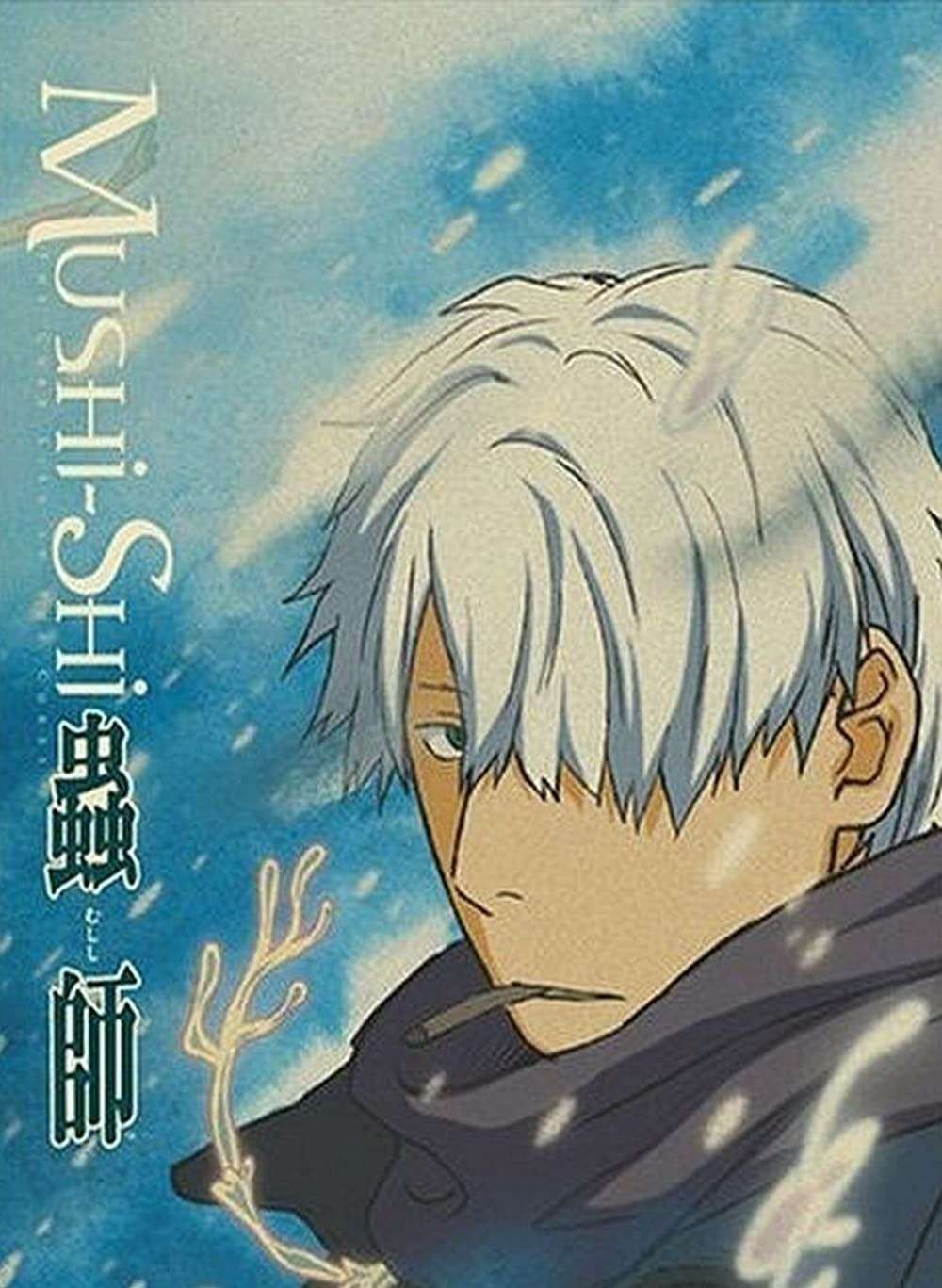
“Mushi”: the most basic form of life. They are beyond the concept of good and evil; they simply exist. Mushi can exist in countless forms and can mimic things from the natural world such as plants, diseases, and even phenomena such as rainbows.
Nonetheless, this is just a vague definition of these entities that inhabit the vibrant world of Mushishi, as to even describe them as forms of life would be oversimplifying. A majority of humans are unaware of Mushi’s existence, so detailed information is scarce.
Why do Mushi exist, and what is their purpose? A “Mushishi,” Ginko, constantly ponders this question. Mushishi are those who study Mushi in order to understand their place within the world’s hierarchy of life.
As Ginko searches for an answer, he pursues rumors of occurrences that seem connected to Mushi.
After all, it could lead to the meaning of life itself.
Mushishi is an episodic anime with only one main character, Ginko. Ginko’s mission is to travel from town to town, researching a phenomenon known as “mushi” and its effects on humans. Also, he assists the different villages with any mushi “problems” they may encounter.
It is both intelligent and thought-provoking for the concept of “mushi,” which is neither human, plant, or animal but affects the daily lives of humans. The way Ginko manages these phenomena, whether he is just researching or treating them, is even more intriguing. Mushishi’s stories contain valuable lessons, and they are beautifully told.
4. Ping Pong the Animation
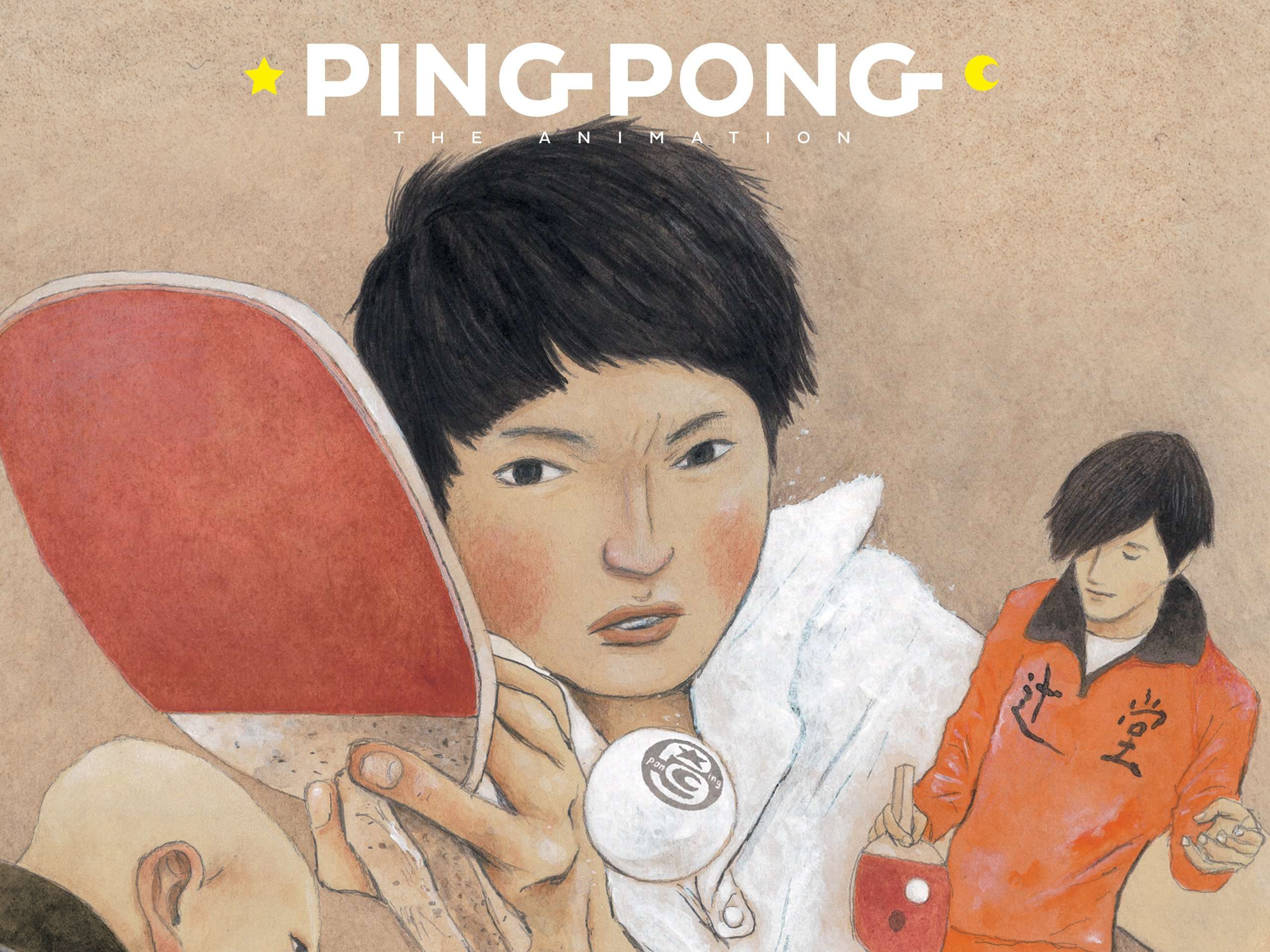
In times of stress, Makoto Tsukimoto repeats his mantra not only during grueling ping pong matches but also during difficult times in his personal life.
Both Makoto and his best friend, Yutaka Hoshino, also known as Smile and Peco, have been fighting together for a very long time.
In contrast to Peco, who has a lot of confidence and declares himself to be the world’s best table tennis player, Smile lacks ambition. Despite that, they have always remained close, with a bond built upon their mutual love for the sport.
For the inter-high table tennis competition, students from all over Japan compete for national and international acclaim. Only the best retain their titles after intense training and competition.
Ambition meets bumps along the way in Ping Pong the Animation. Regardless of the odds, Peco and Smile will face them together.
The animation show Ping Pong The Animation is exceptional. This is more of a powerful emotion series than a sports anime. This is a beautifully crafted coming-of-age story, one that doesn’t come around very often. In a word, it’s unconventional. Nothing about Ping Pong feels ordinary.
Ping Pong really shines when it comes to its characters. The amount of development within such a short period of time is astounding. Every conversation is natural and feels genuine. Seeing even the most unlikely people grow is a breath of fresh air from shows where nothing seems to change.
5. Kenpuu Denki Berserk
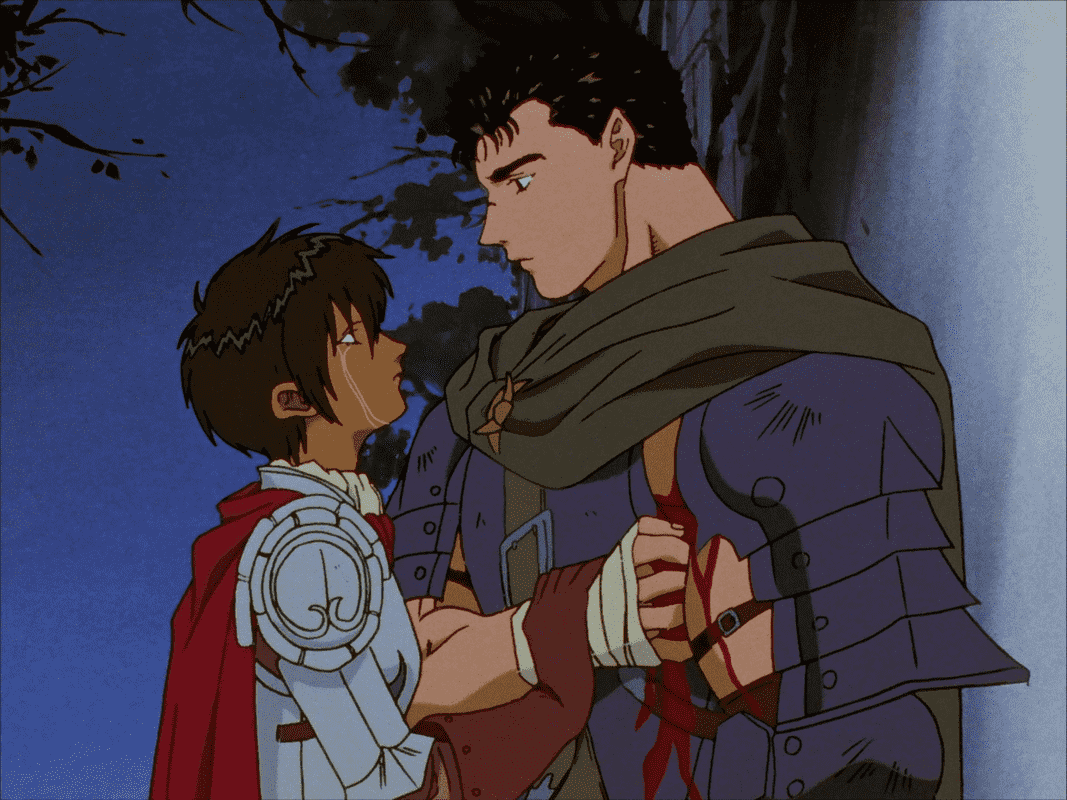
Guts, a mercenary born from his mother’s corpse, embraces the battlefield as his only source of survival. Every day, he puts his life on the line just to get by, moving from one bloodshed to the next.
When Guts encounters the Band of the Hawk, a formidable troop of mercenaries, Griffith, nicknamed the “White Hawk,” recruits him. Guts rises through the ranks quickly to become the head of the offensive faction, which swiftly takes Midland by storm.
As the band continues to seek recognition, Guts realizes that the world is not as black-and-white as he once believed.
In the medieval era, Kenpuu Denki Berserk follows one man’s struggle to find his own path as he supports another’s lust for power and a tragic event that starts the wheels of fate turning.
We are dealing with a story of evil and brutality, dreams and despair, where people struggle to find themselves in the midst of it all and define what really matters. In Berserk, friendship and love are slow to come, but when they do, you will cry, for the relationships forged are more meaningful than almost any you will find in anime.
Griffith’s ambition and charisma know no bounds. Like figures from a painting, his Band of the Hawk serve him faithfully, offering their own hopes and aspirations to his “bonfire of dreams” — because simply being near him seems to promise glory.
6. Rainbow: Nisha Rokubou no Shichinin
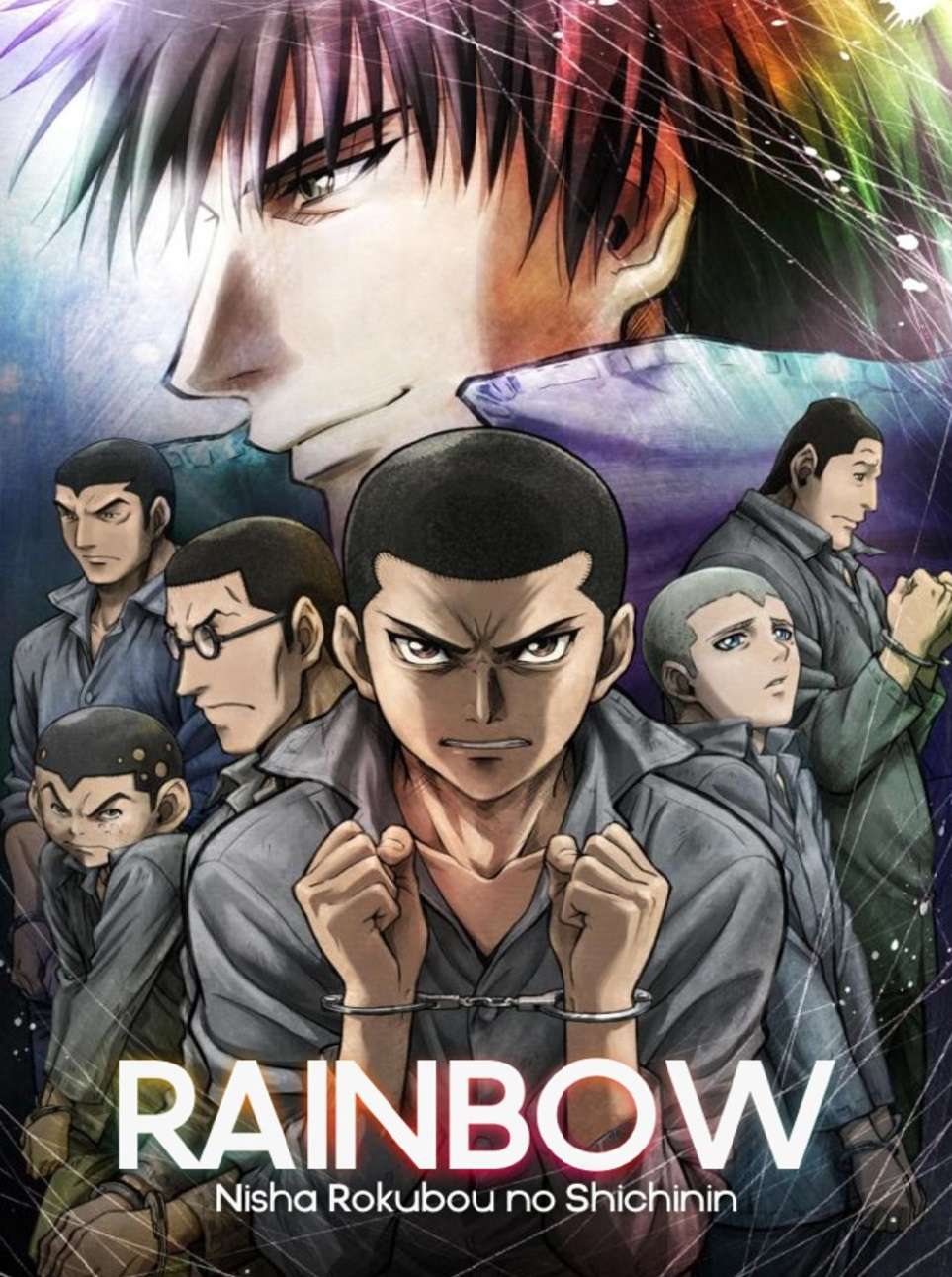
It is 1955 in Japan. Mario Minakami and five other teenagers have just arrived at Shounan Special Reform School after being arrested on serious criminal charges. They become close friends with older inmate Rokurouta Sakuragi – a former boxer – in their cell.
The delinquents begin to see their hopeless situation differently under his guidance and with the promise that they will meet again outside after serving their sentences.
The story follows the seven cellmates as they struggle together against the brutal suffering and humiliation they’re subjected to by Ishihara, a sadistic guard with a grudge against Rokurouta, and Gisuke Sasaki, a doctor who takes pleasure in abusing children.
As they face such hellish conditions, the seven inmates must muster all the strength they have to make it until their sentences are up; but even if they do, what kind of life awaits them on the other side?
In this anime, friendship is shown to be beautiful. The concept of selflessness, sacrificing oneself to help another, and returning to a special place are all present in Rainbow. The drama, emotion, and struggle are all well-balanced.
Among the main characters, each has a unique personality and a dark past, but all of them were either falsely convicted or had good reasons for committing crimes. It is one of those serious anime series that are becoming increasingly rare in recent years. Furyou dramas typically focus on friendship and trust among friends, but this one doesn’t shy away from the toughness of real life.
This anime has an inspiring story and many likable characters.
7. Mononoke
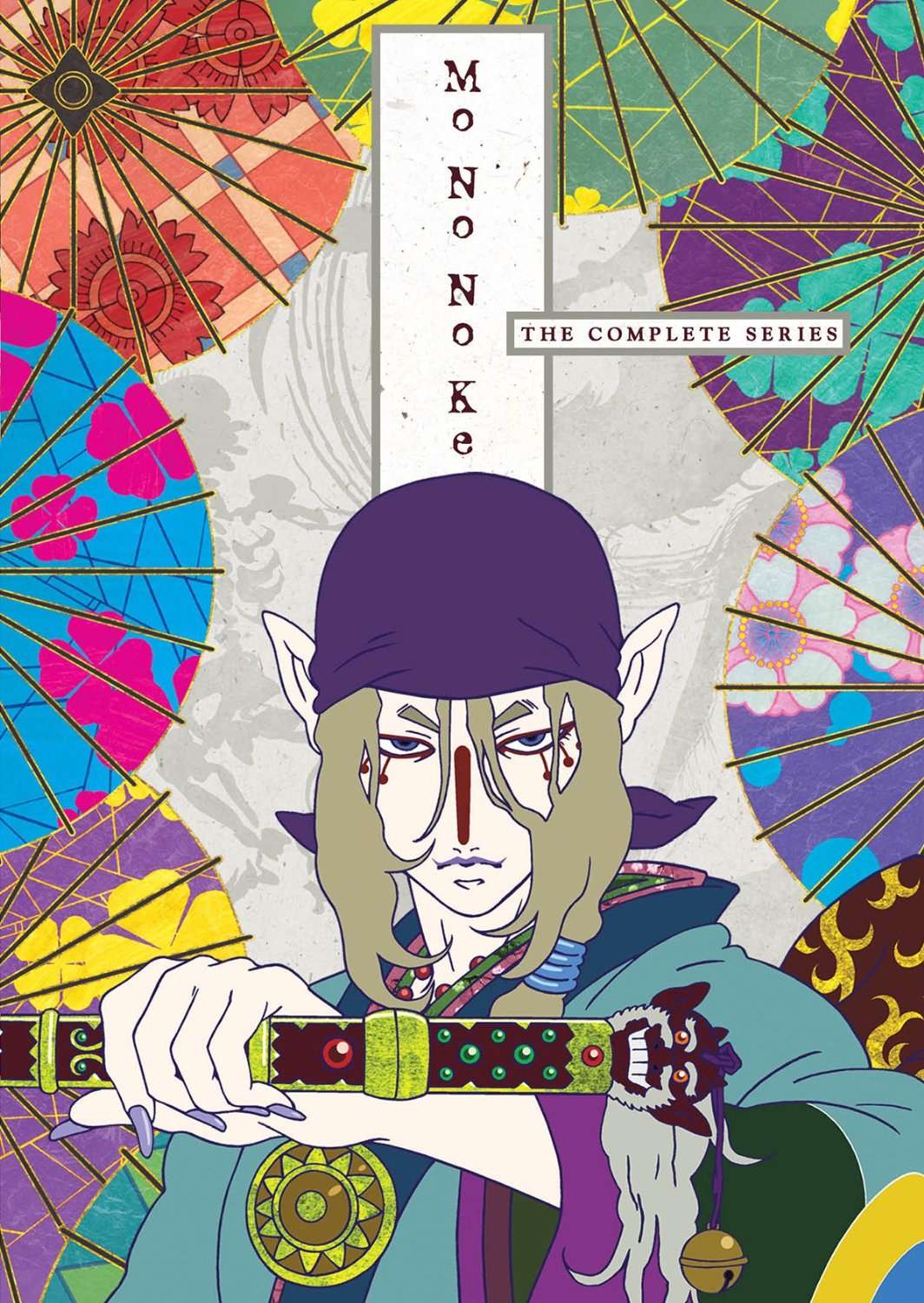
A mysterious and deadly occult master travels across feudal Japan in search of malevolent spirits called “mononoke” to slay. He cannot simply kill the spirits when he locates them; he must first learn their Form, Truth, and Reason in order to use the mighty Exorcism Sword against them.
He must begin his strange exorcisms with psychological analysis and thorough investigation-an extremely dangerous step since he must first confront and understand the mononoke before he has the power to defeat it.
Shino, a pregnant woman who finally found a place to rest in an old-fashioned inn, joins the Medicine Seller on his journey. After being reluctantly placed in the final vacant room by the owner, she quickly discovers that it is infested by a lethal band of mononoke, the Zashiki Warashi.
As a hunter, the Medicine Seller begins his investigation to find the Form, Truth, and Reason before the Zashiki Warashi can kill again.
This series is beautifully written and directed and really immerses you in the story. Each arc contains new stories with new characters that are well fleshed out at the beginning.
There are usually different stereotypes associated with each character. Among them are samurai, priests, monks, government officials, and children. Despite only comprising twelve episodes, Mononoke is well worth the watch, and although it is very, very Japanese in content, it does not detract from its enjoyment in the slightest.
8. Grand Blue
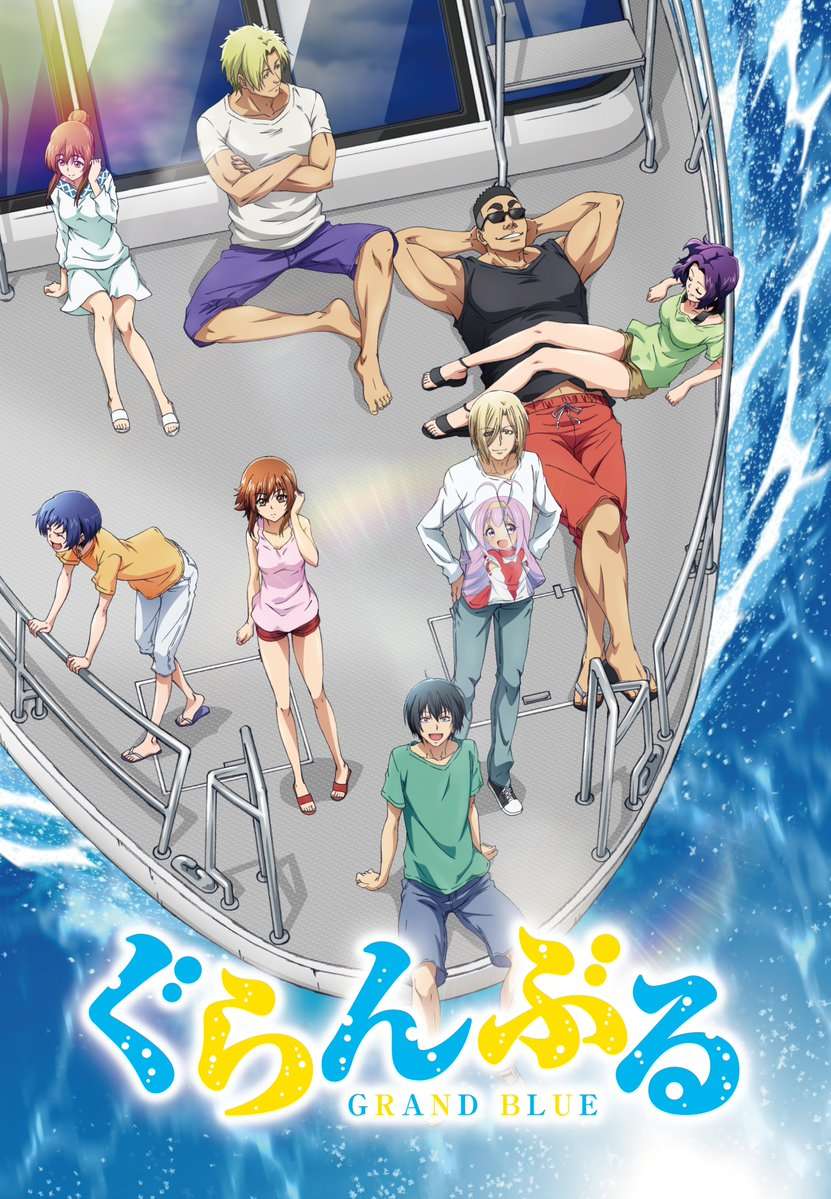
After a semester at the university in the city of Izu, Iori Kitahara moves into the apartment above Grand Blue, his uncle’s scuba diving shop. Iori aspires to have the ideal college experience, but when he enters the dive shop, he is drawn into the alcoholic activities of the Diving Club members.
Shinji Tokita and Ryuujirou Kotobuki persuade Iori to join their bizarre party. Iori’s cousin Chisa Kotegawa eventually walks in and catches him in the act, earning her utter disgust.
Iori’s misadventures with his eccentric new friends are chronicled in Grand Blue as he tries to achieve his college dream while learning how to scuba dive.
As a young adult cultural society-centered slice of life, Grand Blue stands out. The show makes fun of its characters often. It makes fun of stereotypes of college life, like young adults drinking and partying.
Then there is meta-humor that plays with jokes with nudity. It’s also self-aware in that it doesn’t try to hide its humor. Characters often act unapologetically regardless of the consequences, which often agitates others.
It appears that this show is a joke due to its attempt at glorifying its humor. Once you are sucked into Grand Blue’s themes, you’ll fall in love with it. It’s an anime that plays with itself, from the adult humor to the character gags.
9. 3-gatsu no Lion
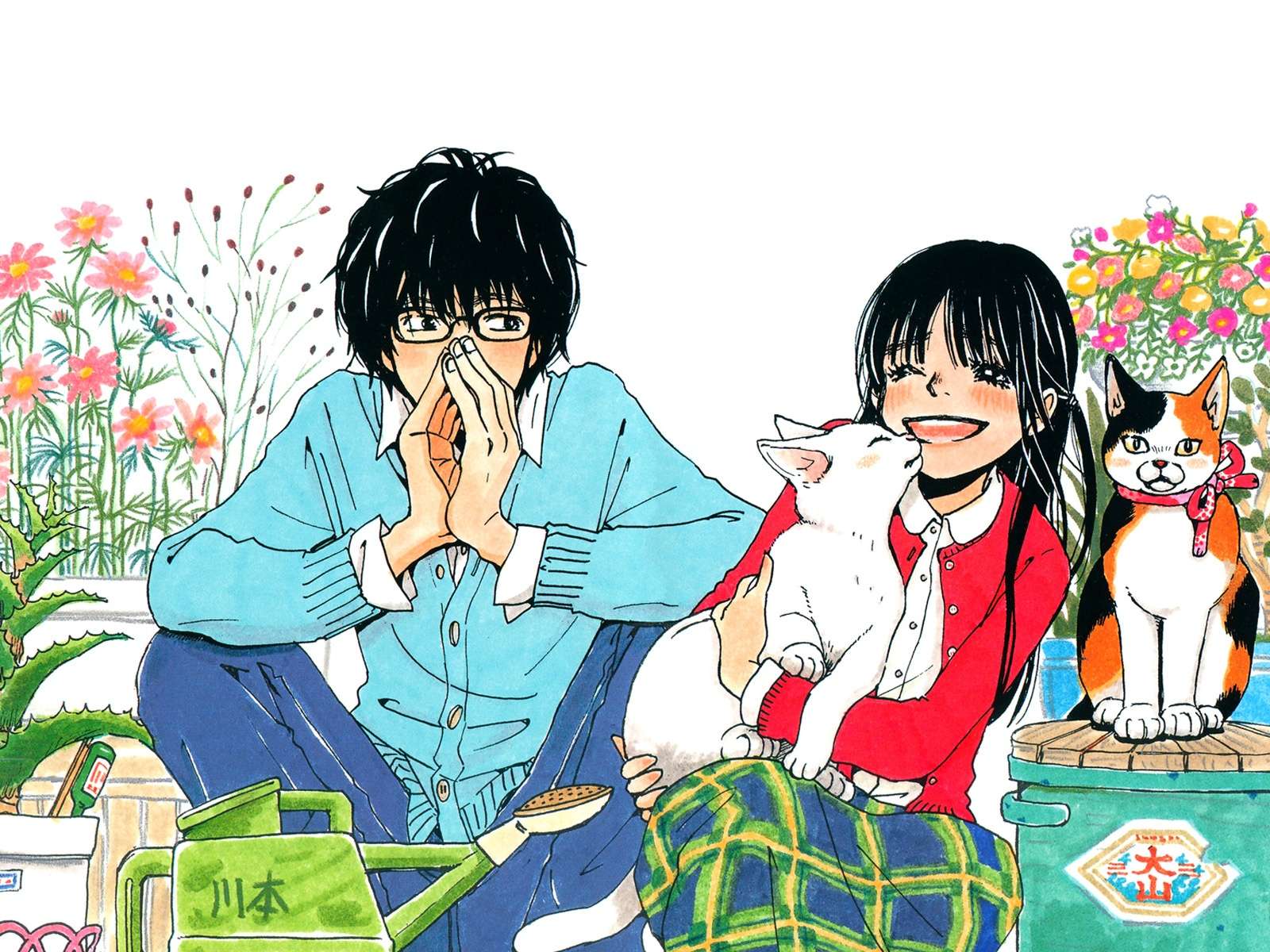
Rei Kiriyama reached professional status in middle school as one of the few elite players in shogi. As a result, he is under great pressure from both the shogi community and his adoptive family.
He moves into an apartment in Tokyo in order to escape his tense home life. Rei, a 17-year-old living on his own, takes poor care of himself, and his reclusive nature ostracizes him from his peers at school and in shogi hall.
After settling in Tokyo, Rei meets Akari, Hinata, and Momo Kawamoto, three sisters who live with their grandfather, who owns a wagashi shop. Akari, the eldest girl, wants to give Rei motherly hospitality so she can alleviate Rei’s loneliness and poor lifestyle.
As the Kawamoto sisters cope with past tragedies, they also share a unique familial bond with Rei, something he has lacked for most of his life. While attempting to maintain his physical and mental health through his shogi career, Rei also must learn to understand his own emotions and interact with others.
It is an understatement to say 3-gatsu no Lion is powerful. Like the opening scene, there are numerous moments that do much with little. A lot is implied and unsaid.
Even a simple, everyday discussion between family members, like what they are planning for the next day, or a brief discussion about one’s hometown, can contain more weight and characterization than a series might in its entirety. This anime shows that unhappiness can be accepted. The fact that you are depressed, unsatisfied, or stressed does not make you weak; it makes you human.
10. Houseki no Kuni
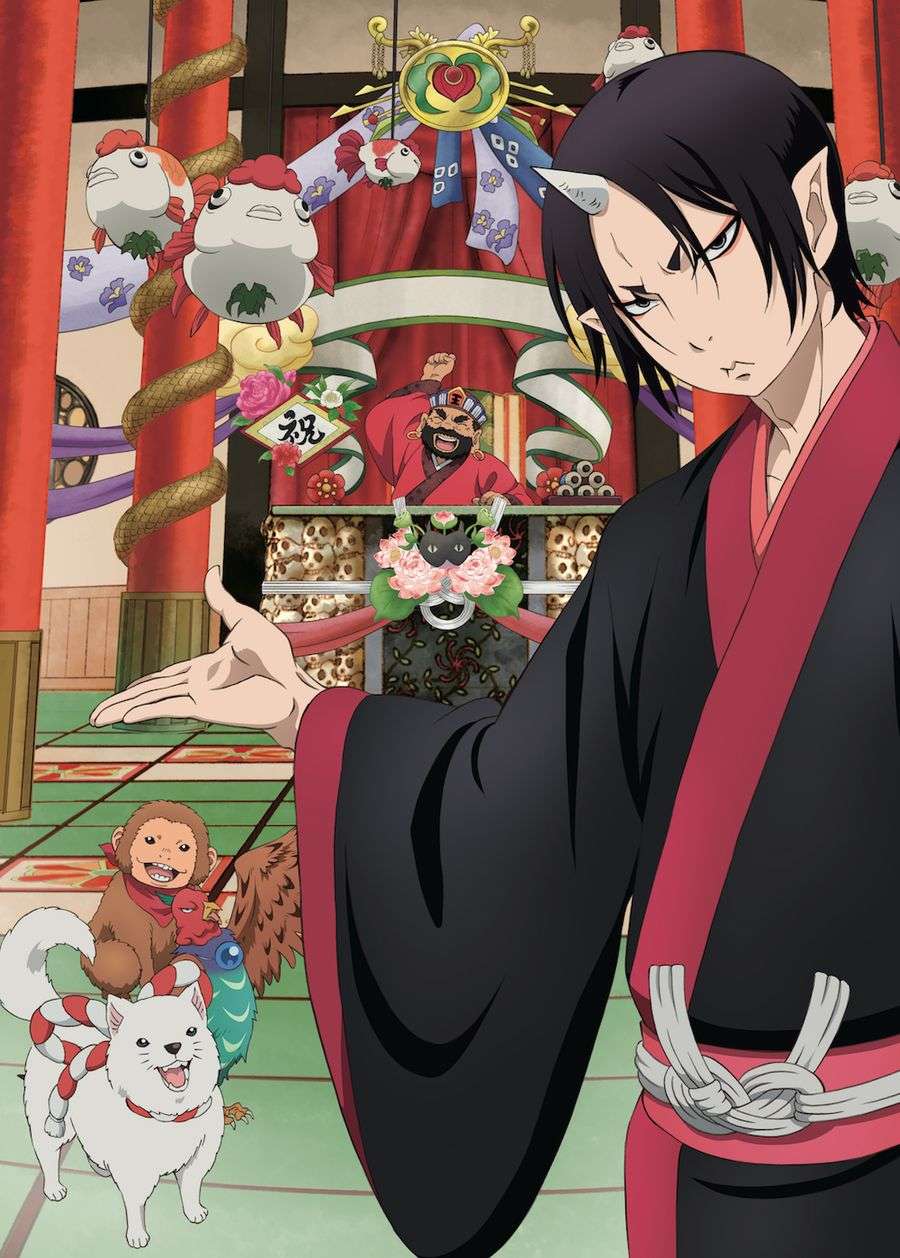
Six meteors have destroyed a world that is now inhabited by crystalline organisms called Gems. The Gems each play a specific role in combating the Lunarians, who attack them to shatter their bodies and use them as decorations.
Phosphophyllite, also known as Phos, is a beautiful and fragile Gem with the dream of helping their friends. Due to their fragile condition, they are told to compile an encyclopedia. As Phos reluctantly accepts this assignment, they meet Cinnabar, who has been relegated to patrolling the isolated island at night due to the corrosive poison their body produces.
After seeing Cinnabar’s dissatisfaction, Phos decides to find a role for both Gems that they Phos strives to be useful and protect their fellow Gems in Houseki no Kuni.
It is not just a fascinating journey about the main character’s struggle against themselves or even about the supporting cast that serves as foils to Phos. It’s all about your body-how you deserve to live in harmony with it. In this anime, bodies are treated as sacred totems.
We have an intriguing story, but we also have an amazing cast that brings it to life; the characters are immortal humanoid gems, their interactions are interesting, varied, and at the same manage really funny when the situation requires it, this anime handles the comedy very well and fits in well without disrupting the mood.
11. Kaguya-sama wa Kokurasetai: Tensai-tachi no Renai Zunousen
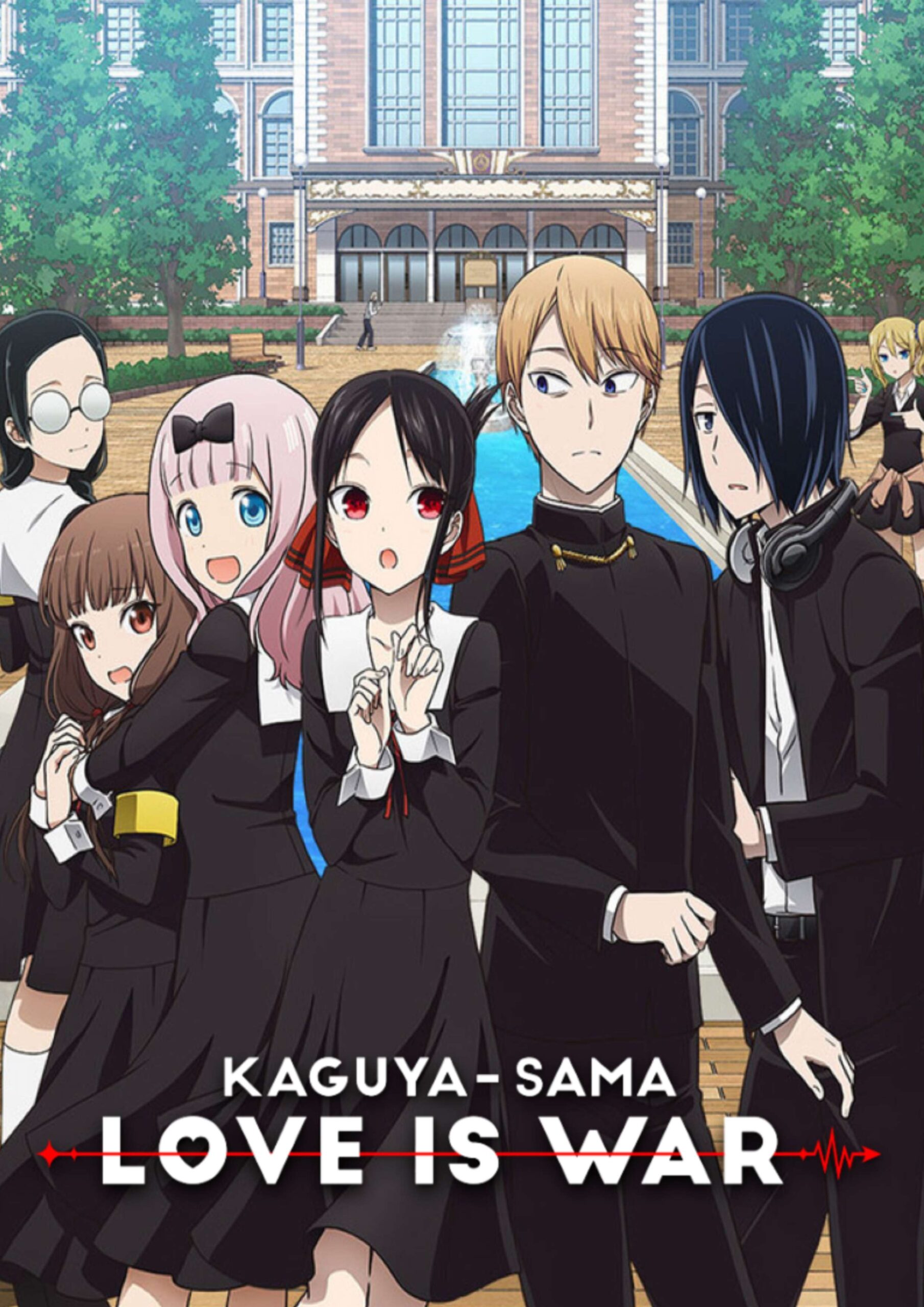
Miyuki Shirogane and Kaguya Shinomiya are among the top representatives of Shuchiin Academy’s student body. Miyuki is ranked among the top students in the country, respected by peers and mentors alike, and serves as the president of the student council.
Vice president Kaguya is the eldest daughter of the wealthy Shinomiya family and excels alongside him in every field. All the students are envious of them, as they are regarded as the perfect couple.
Despite already having feelings for one another, neither is ready to admit it. The first to confess their feelings loses will be looked down on and will be considered inferior. Miyuki and Kaguya are both equally committed to being the one who emerges victorious on the battlefield of love!
The story is excruciatingly relatable. Even their failures are entertaining to watch since their approach to love is so misguided, but their mind games are amusing. They are both walking disasters. Irony, sarcasm, and other sarcastic supporting characters are employed in the show to mock them for this.
With its wildly contrasting tones, visual excitement, and music, it creates a dynamic comedic experience. As the series progresses, there is a lot of character interaction, as well as a silent monologue in our two main characters’ heads. The catch is that the inner selves of the characters differ from what they appear to others in real life.
Confessing your love to someone can be terrifying. Growing up is even more challenging. In the midst of their tangled emotions, Kaguya and Miyuki are gradually and steadily navigating. There are perfectly timed jokes, expert directing, and relatable characters in this show.
12. Hellsing Ultimate
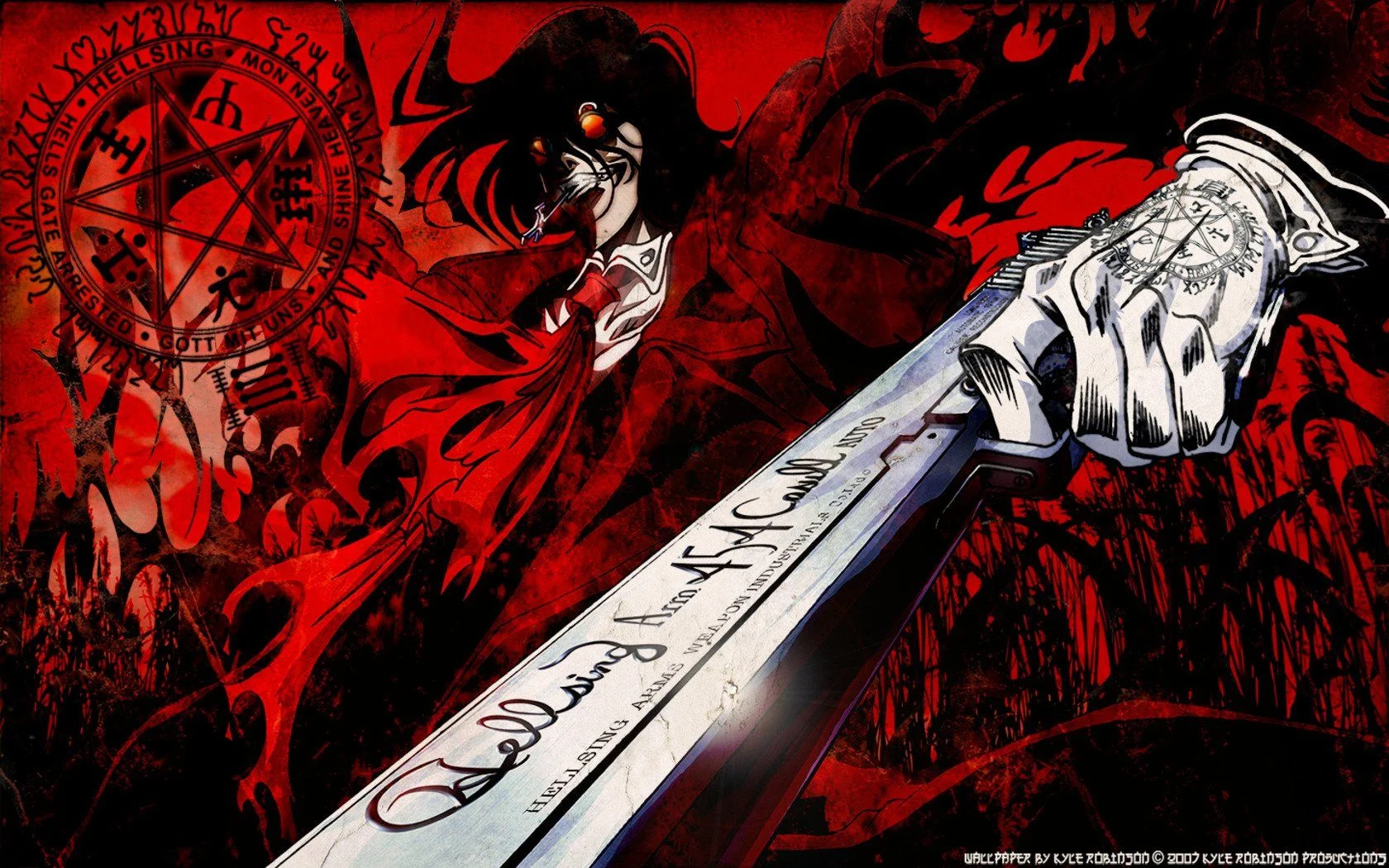
It is said that creatures of darkness and evil stalk the night, devouring any unfortunate enough to be caught in their clutches. Hellsing is an organization dedicated to destroying these supernatural forces that threaten humanity’s very existence.
Its leader is Integra Fairbrook Wingates Hellsing, who commands a powerful military and fights undead monsters.
However, Integra’s vast army pales in comparison to her ultimate weapon: Alucard, a vampire who works as an exterminator for Hellsing and works against his own kind. Seras Victoria, Alucard’s new vampire servant, is at his side in battle against not only monsters but all those who stand against Hellsing, good or bad.
Hellsing Ultimate proves that appearances are often deceiving and that the greatest weapons can come in the form of one’s worst nightmares.
Hellsing Ultimate tells the story of a vampire hunting other vampires. There are many fascinating characters inhabiting this rich and rewarding universe. The story moves at a breakneck pace throughout the 40-minute episodes, setting up one conflict after another.
It’s the kind of anime that will keep you pining for the next episode. It is packed with intrigue, betrayal, conspiracy, gore, sarcastic humor, and plenty of ass-kicking action. Each of the characters in this anime has their own unique style, and they deliver it well.
13. Kiseijuu: Sei no Kakuritsu
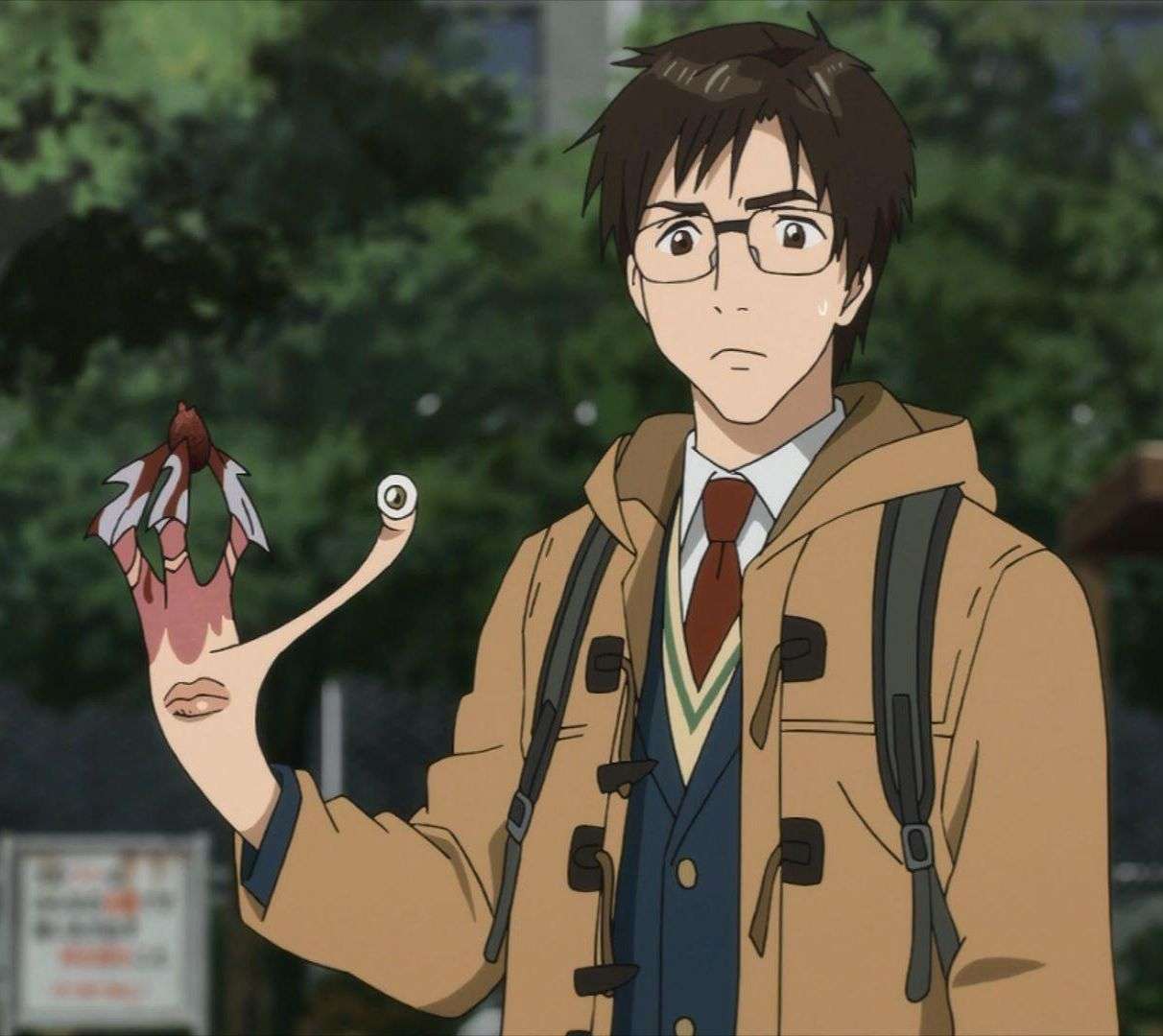
Aliens infiltrated humanity by burrowing into the brains of vulnerable targets and descended upon Earth suddenly. The insatiable creatures have the ability to morph into a variety of forms in order to catch unsuspecting prey.
Shinichi Izumi, a 16-year-old high school student, comes down with one of these parasites, but it doesn’t take over his brain, but it ends up in his right hand instead. Due to its inability to relocate, Migi has no choice but to rely on Shinichi for survival. This forces them into an uneasy coexistence and forces them to defend themselves against parasites that hope to eradicate this new threat.
In this series, the ability to convey human nature and focus on more than just outlandish survival battles makes it stand out quite a bit. It shows both the best and the worst of human behavior, along with how parasites act.
There are times when there is almost a similarity while others are in stark contrast. Shinichi’s life undergoes dramatic changes with certain events that create tragic scars. These changes affect him both physically and mentally.
In the beginning, we see him as a normal guy who just wants to fit in. Shinichi is just someone who wants to make friends, get an education, and maybe even fall in love until he accepts reality later on. As a result of the parasites, all of that has changed for him, and he can never go back to his normal life.
14. One Outs
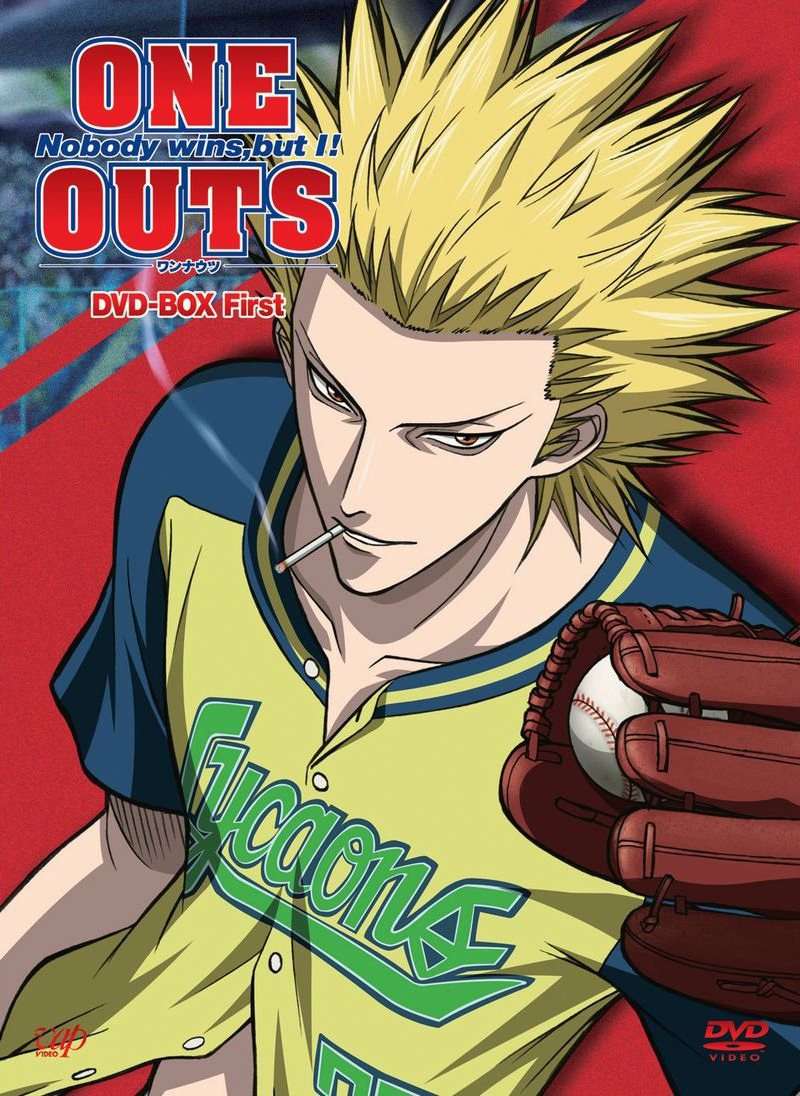
Toua Tokuchi is by profession an athlete but by nature a reckless gambler. Using nothing but his wits and a “fastball” that reaches a speed of 134 kmph, he has won 499 games of “One Outs,” which is a simplified game of baseball between the pitcher and the batter.
Astonished by Toua’s skills on the mound, veteran slugger Hiromichi Kojima scouts the pitcher for his long unsuccessful team, the Saikyou Saitama Lycaons. As far as Kojima is concerned, Toua will lead them to the championship; however, Tsuneo Saikawa, the owner of the Lycaons, sees the pitcher as a threat to the income generated by the team.
Toua comes up with a unique “One Outs” contract: every out he pitches will earn him five million yen, while every run he gives up will cost him fifty million yen.
Toua and those around him are engaged in intense psychological battles in One Outs. Millions of yen are on the line. Is it possible for a pitcher who has only gambled in an imitation of baseball to actually lead a real baseball team to victory?
The series includes everything a viewer could hope for in a mental or gambling-based series, and the use of baseball allows all 25 episodes to remain engaging thanks to the various ways the rules can be warped and the loopholes that can be exploited. Anyone looking for a series revolving around plans, schemes, and overall mental talent will certainly not be disappointed.
15. Boku dake ga Inai Machi

Several minutes before tragedy strikes, Satoru Fujinuma finds himself sent back in time. Using this powerful yet mysterious phenomenon, which he calls “Revival,” the detached 29-year-old manga artist has saved countless lives.
Satoru, however, is sent back to the past once again when he is falsely accused of the murder of someone close to him, this time 18 years prior. Eventually, he realizes that the murder could be connected to the abduction and murder of one of his classmates, Kayo Hinazuki, that happened when he was a child. This is his chance to redeem himself.
In Boku Dake ga Inai Machi, Satoru attempts to uncover what really transpired 18 years ago, prevent the death of his classmate, and protect the people he cares about today.
It is not a story about time travel; it merely includes such an element to get the narrative moving. Whenever time travel is emphasized in stories, they often mess up the plot since they fail to pay attention to consistency, which makes the story sloppy and unreliable. This anime avoids major inconsistencies and focuses on its main theme by maintaining the element simple and undetailed.
Despite the backdrop being based around Satoru investigating and trying to prevent murders, it isn’t the main element that will stay with you after the series ends.
In essence, this is a character drama that lets us see Satoru’s developments, the hardships that he endures, and how he matures from an indifferent and uncaring character at the beginning into an endearing character in the end.
16. Initial D First Stage

Takumi Fujiwara has little to no interest in cars and has little to no knowledge about the world of car enthusiasts or street racers. He is the son of a tofu shop owner and tasked with delivering tofu every morning, driving along the mountain of Akina. Thus, talking about cars or driving, in general, would only remind Takumi of the tiring daily routine he had to endure.
The Akagi Red Suns, an infamous street racing team, challenge the local mountain pass one night in Akina. In addition to having Ryousuke and Keisuke Takahashi as their aces, the Red Suns plan on conquering all racing courses in Kanto, establishing themselves as the fastest crew in the region.
On the way home from Akina, an old Toyota AE86 overtakes one of their ace drivers. As a result of the incident, the Takahashi brothers are cautious of a driver armed with remarkable technique and experience on the local roads—the AE86 of Mount Akina.
Takumi is not an archetype like the loser who tries really hard or the genius born of nature: he knows nothing about cars, and he’s not even that fond of driving. Despite the fact that they throw around a little bit of racing lingo, you are never more behind than the main character, and you are given a chance to become intrigued by street racing while Takumi does so.
With his attitude and experience, he hooks and reels you into what would otherwise be a complicated and technical world of street racing.
17. Gyakkyou Burai Kaiji: Ultimate Survivor
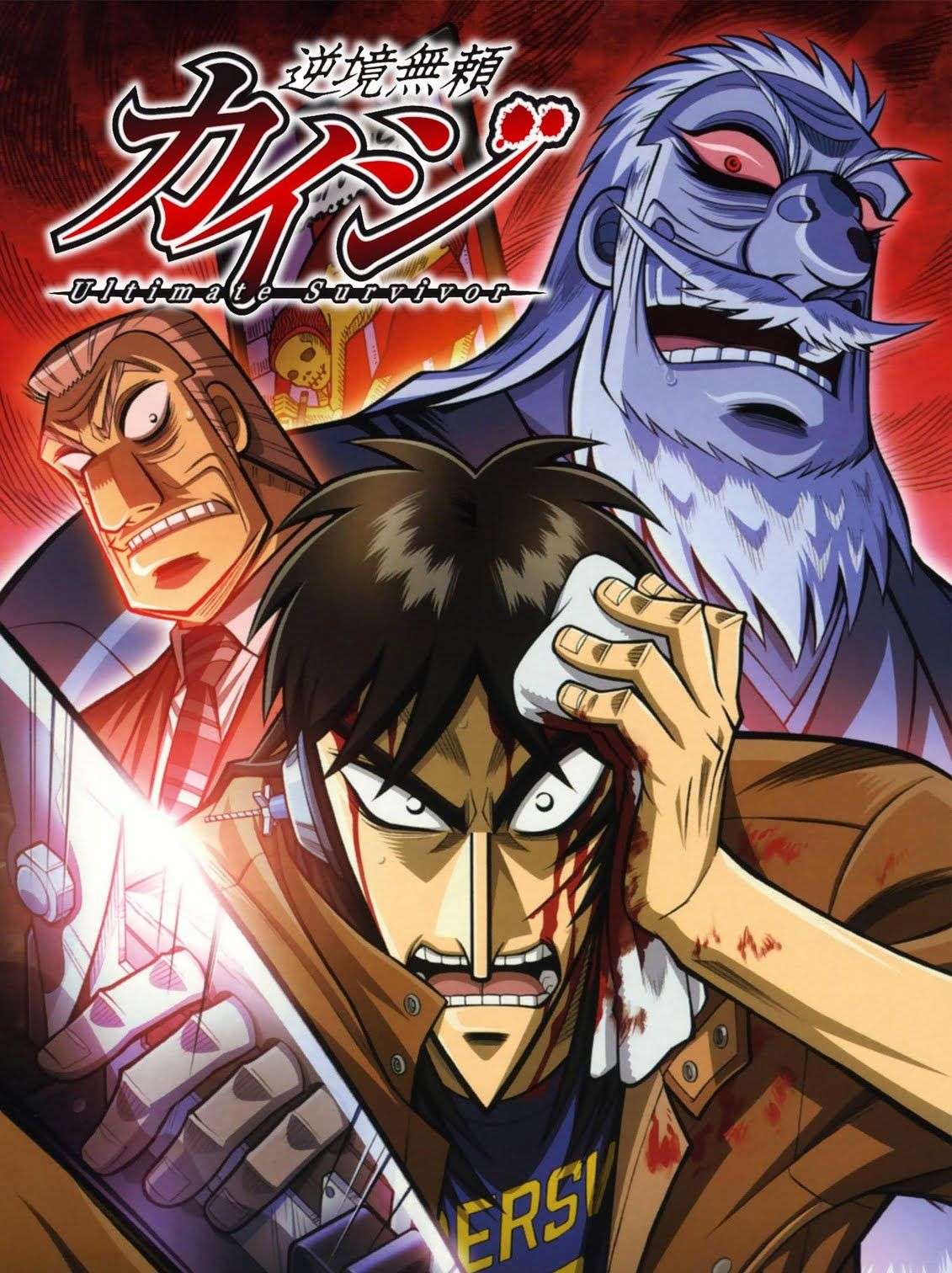
A good-for-nothing loiterer, Kaiji Itou spends his days stealing hubcaps and drinking beer until he is tricked by the former co-worker he once worked with. As Kaiji is unable to repay his friend’s debt all by himself, he is offered a shady deal to participate in an underground gambling operation on a cruise ship.
He is thrown headfirst into a life-threatening rollercoaster of mind games, cheating, and deceit that is just the beginning of his new hell.
In Gyakkyou Burai Kaiji: Ultimate Survivor, our unlucky protagonist is forced to fight both other people and the mysteries of their psyches.
When people are in a tight spot, Kaiji finds out the hard way that the worst sides of human nature come to the fore and that the greatest dangers of all come from greed, paranoia, and the survival instinct in general.
The story revolves around a series of gambling incidents, but the gambling world Kaiji is drawn into is merely used as a metaphor for the struggle to survive in the real world, as it offers existential ideas about the human race and where we fit into the rat race.
There are many statements presented in this anime that are depressingly stark, somber realities that really hit home. Although you will want to disagree with the scornful remarks, you can’t. You can’t because they simply state the harsh realities of life, realities that most of us choose to turn our backs on in everyday life.
18. Koukaku Kidoutai
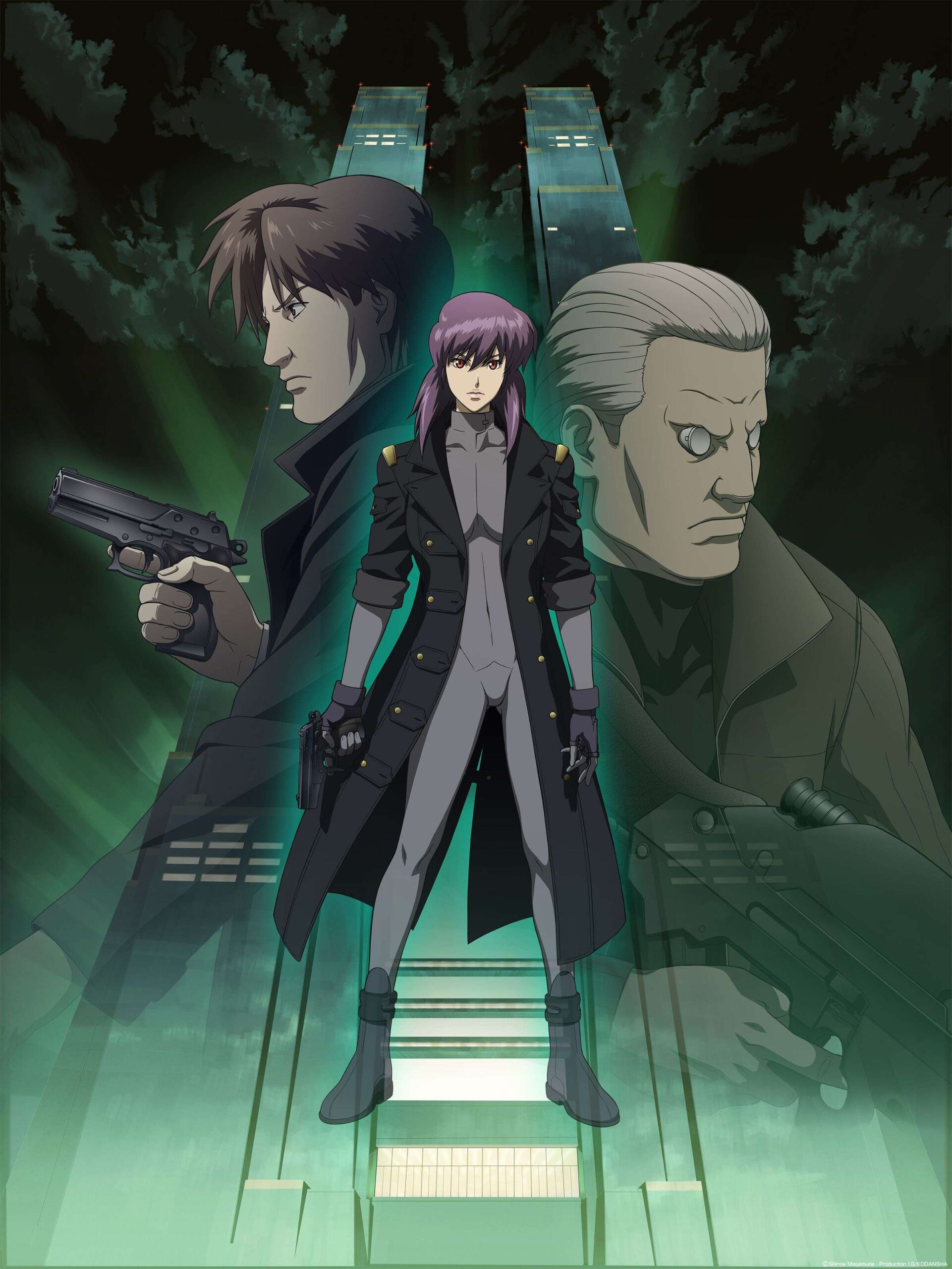
Niihama City is a technologically advanced metropolis in the year 2029. A great deal of progress in cybernetics has enabled its citizens to replace their limbs with robotics. In an increasingly globalized world, the city’s Public Security Section 9 is responsible for combating corruption, terrorism, and other dangerous threats.
Major Motoko Kusanagi of Section 9 leads a team of investigators to the trail of a mysterious hacker dubbed “Puppet Master,” who robs their victims of their memories. In this futuristic world, the body of the Puppet Master is nearly entirely robotic, giving them incredible power.
While Motoko and her subordinates follow the enigmatic criminal’s trail, other parties, including Section 6, get involved, forcing Motoko to confront the complexities of the case. Motoko wonders about various philosophical questions, such as her own life’s purpose, and realizes that it is only the Puppet Master who can provide the answers.
Though it never really finds an answer to the question “What makes us human?” it comes close. It doesn’t really beat the audience over the head with its philosophical, existentialist, and technical talk. In a film about big questions, many of these issues are handled in subtle ways that keep the pace moving while still making the audience think.
Motoko is the star of this movie and is the only character who changes over the course of the film, even though all the characters have interesting aspects. Throughout the entire film, she struggles with losing her humanity due to being a cyborg, and everything culminates in a masterful finale that just leaves you in awe.
19. Planetes
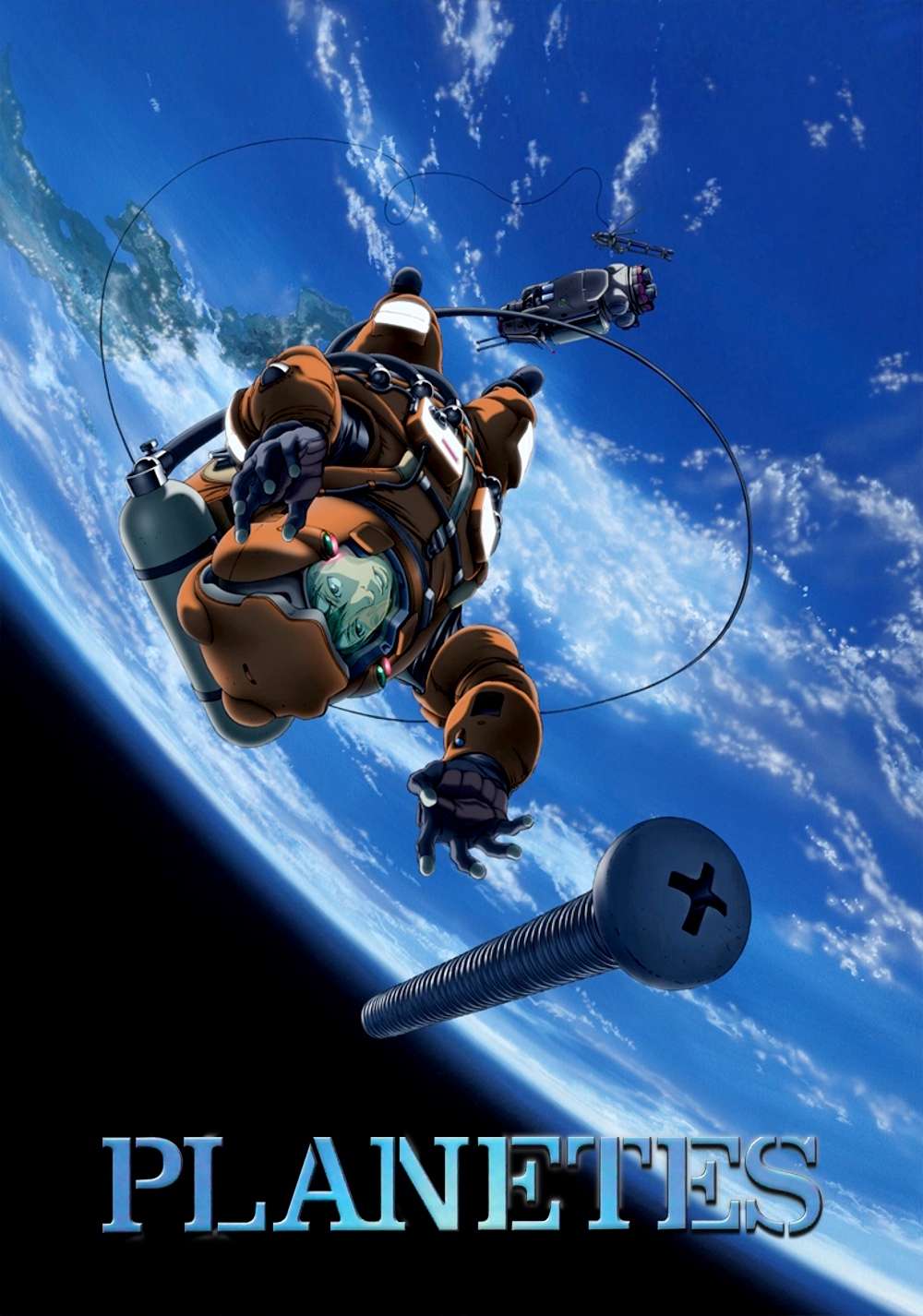
As of 2075, space travel is no longer merely a dream but an everyday reality for humanity. Science and technology advancements have led to the colonization of the moon, the commercialization of outer space, and the emergence of large space corporations.
In addition to her interest in the cosmos, Ai Tanabe joins Technora Corporation as a member of their Debris Section, a department responsible for the removal of dangerous space junk between the orbits of the Earth and the Moon.
Ai finds out, however, how unappreciated her job is. Technora’s Debris Section is understaffed, poorly funded, and forced to use a dilapidated spaceship nicknamed the “Toy Box” for debris removal.
Ai perseveres, gradually becoming acquainted with the strange characters who constitute the Debris Section staff, including bumbling but friendly chief clerk Philippe Myers; the mysterious and tight-lipped Edelgard Rivera; and the passionate Hachirouta Hoshino, who longs for his own spaceship.
Planetes is an unconventional sci-fi series that centers on the personal lives of people who were born on Earth but who dream of living among the stars.
Planetes’ characters are definitely its biggest strength. Ai and Hachimaki are both great leads. The other members of the crew are not far behind.
Like most shows, everyone has their own problems and ambitions. Planetes does an excellent job of describing each character. Planetes characters aren’t just interesting because of how they develop, but also how they interact with each other.
20. Kono Sekai no Katasumi ni

Suzu Urano is a kindhearted and pure girl who loves to draw and keeps her head in the clouds. Having grown up on the outskirts of Hiroshima with her family, she is more than happy to assist her grandmother with her nori business.
Suzu, however, leaves her beloved home when she reaches marriage age to marry Shuusaku Houjou, a man she barely knows. A homesick bride struggles to adjust to the unfamiliar environment of her new husband’s household as the war effort stretches far beyond its point of no return.
When Suzu’s home is invaded by the war and peace is replaced by brutality, how will she support herself and those she loves along the way?
The story of Kono Sekai no Katasumi ni offers a vivid but haunting portrayal of everyday life before and after World War II, emphasizing the perseverance and courage of ordinary Japanese people in one of recent history’s darkest periods.
An ordinary family of that time is shown in great detail in the movie. As a slice of life, it shows her old-fashioned marriage, living with her in-laws, and communication with neighbors. It is set during wartime, and hardship is gradually introduced, but there are happy, sweet, and tender moments as well.
The film itself is slow and beautiful. The plot is minimal, as with most slice-of-life films. No major conflict is resolved. Just life and the effects of war. There is a distinct art style, thorough research in history, and passion in this film.
21. Asobi Asobase
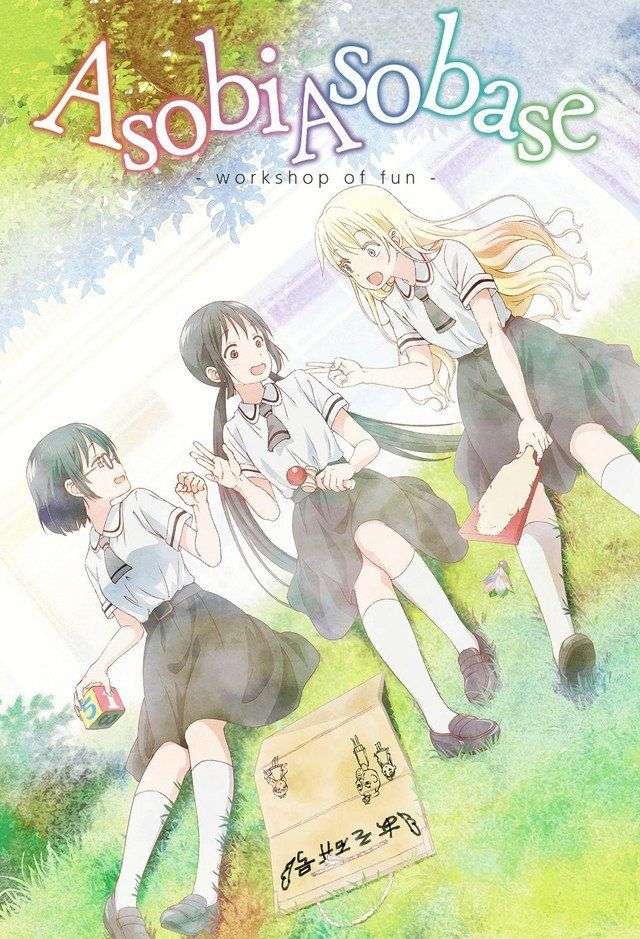
Olivia, a foreign transfer student who cannot speak English, plays the “look-the-other-way” game with Hanako Honda, a loudmouthed airhead during recess. Their rowdy behavior infuriates Kasumi Nomura, a deadpan loner who is constantly teased for losing games by her older sister.
Though Kasumi declines Olivia’s offer to join the fun, she eventually gets involved nonetheless and disperses her own brand of mischief. In no time, a strange friendship forms between the peculiar trio, and they decide to form the “Pastime Club,” where they can resume their day-to-day hijinks.
We enjoy watching Asobi Asobase’s hilarious antics and their struggles to learn English, their desperate attempts to be popular, or their getting caught by teachers will never get boring.
The characters of an anime will always contribute to the plot’s aim either to make us excited, laugh, thrill, or horrify. Asobi Asobase has a wide range of well-done characters, each contributing to the show’s aim, which is to be comedic. Even though the main cast carries most of the show, some of the supporting cast also get their moments of fame.
This show contains so many jokes from so many categories that you may think it’s all a parody. The show literally challenges you to laugh at how characters react when you watch Asobi Asobase. Bringing comedy to a level that is near incomprehensible is a risk that Asobi Asobase takes.
22. Hinamatsuri

A yakuza member, Yoshifumi Nitta, is rudely interrupted while savoring the success of clinching a prized vase for his collection when a strange capsule falls on his head.
A young, blue-haired girl emerges from the capsule; she does not disclose anything about herself other than her name — Hina — and the fact that she possesses immense powers. In case her powers remain unused, she loses control and unleashes an explosion. Nitta has no choice but to become her caregiver.
Hina agrees to help Nitta with a construction deal so that she can use her powers freely. A rival yakuza group, however, attacks his boss covertly while this is happening. Nitta was shocked to learn that his colleagues had pinned the blame on him! Nitta decides to attack the rival group as retaliation, so he steels himself and arrives at their hideout.
However, Hina unexpectedly steps in and wipes out the entire group. In the end, Hina could prove to be a valuable asset to Nitta, and his yakuza business, provided she doesn’t use her powers on him first. Thus begins the strange story of this unlikely couple.
The comedy in Hinamatsuri is brilliant to the core. The comedy and jokes are really funny as they are all timed and, most importantly, not repetitive.
What makes the comedy more brilliant is how the characters react to the comedic situations that go on in this series. Hinamatsuri is a slice of life/comedy anime that is funny and has great character development.
23. Akira

The year was 1988 in Japan. As a result of the explosion caused by a young boy with psychic abilities, World War III is triggered. In order to prevent further destruction, he is captured and taken into custody.
Currently, in the year 2019, a restored version of the city known as Neo-Tokyo stands in its place-a place rife with gang violence and terrorism against the current government. In this scene, Shoutarou Kaneda leads a group of misfits known as “the Capsules” who ride huge, custom motorcycles and are in constant conflict with “the Clowns.”
Tetsuo Shima, Shoutarou’s best friend, is caught up in an accident with an esper who has escaped from a government institution and is on the streets of Tokyo.
Tetsuo develops his own mysterious abilities after this encounter, as the government attempts to quarantine this latest psychic as a desperate measure to prevent him from unleashing destructive powers that might once again bring the city to its knees.
In every way, it is a classic that people interested in or thinking about getting into anime, or already fans of anime who have not yet seen it, should check out. It is a solid mix of action and a complex story, and while you may not completely grasp the story or relate to some characters, it is a minor flaw in what is an otherwise beautiful film.
Aside from the interesting characters and mind-boggling themes, the film is also highly enjoyable because of its details and politics. The movie is truly unique, and it has stood the test of time.
24. Eizouken ni wa Te wo Dasu na!
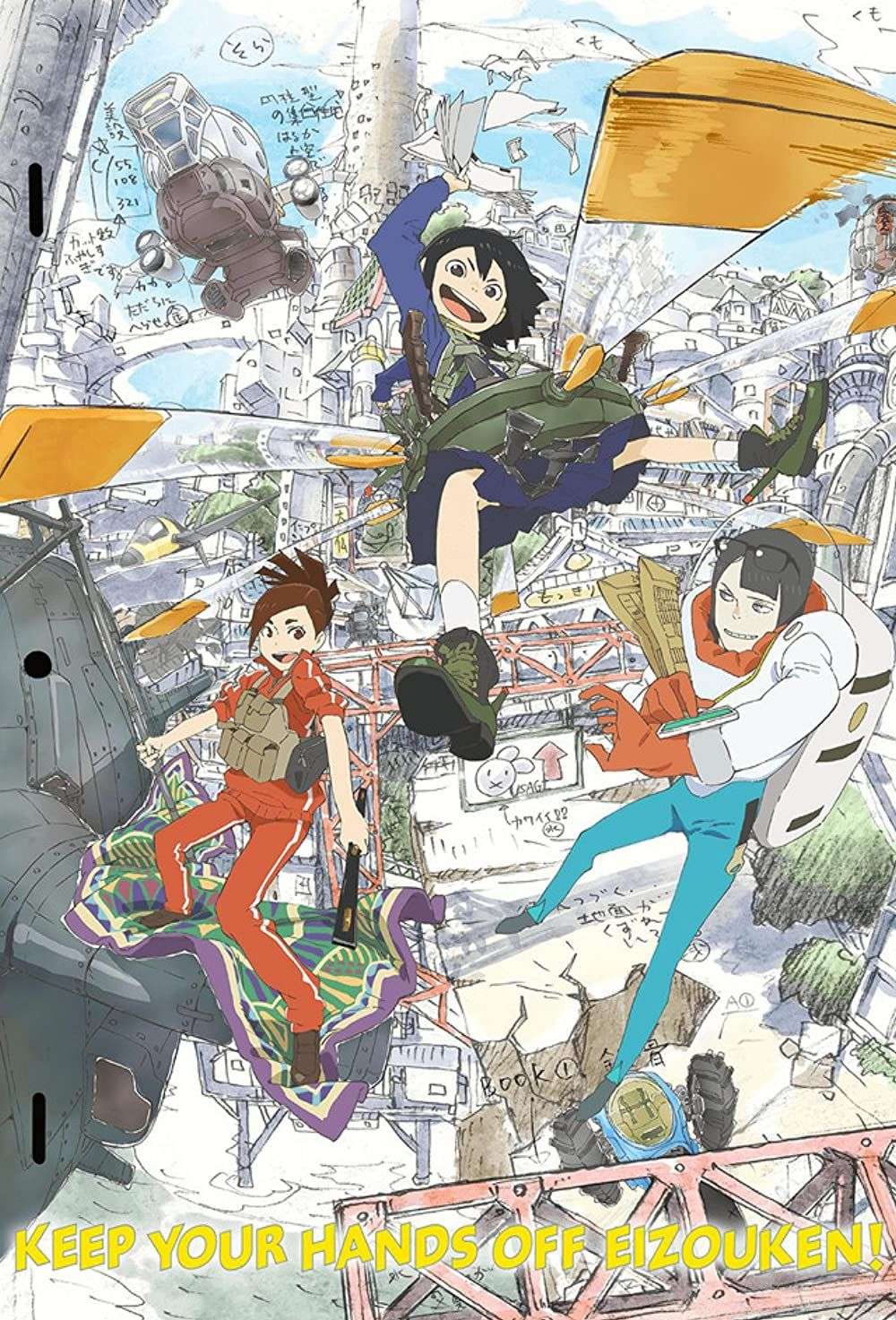
Midori Asakusa views the world differently than most people. Always with a sketchbook in hand, Asakusa draws detailed landscapes and backgrounds of both the world around her and the one her imagination can create.
A simple act of drawing on a wall evolves into a repair operation on the outer hull of her spaceship. Only her best friend Sayaka Kanamori can bring her back to reality. Asakusa’s childlike wonder contrasts with Kanamori’s calculated approach to life.
In a chance encounter where they “save” the young model Tsubame Misuzaki from her overprotective bodyguard, Asakusa and Misuzaki immediately connect, as both have a deep passion for art and animation.
Asakusa is interested in backgrounds and settings, while Misuzaki prefers to draw people. Kanamori, sensing a money-making opportunity, suggests that they start an animation club, similar to the school’s anime club. In this way, the trio begins their journey to create an animation that will awe the world.
This is a love letter to animation, incredibly creative, and a testament to the medium’s potential.
This show’s greatest strength is the close relationship between our three main characters. In this show, they start off as friends, but by the end, they look more like a family. Nevertheless, each member has their own skills that are crucial to the success of the club.
25. Bungou Stray Dogs
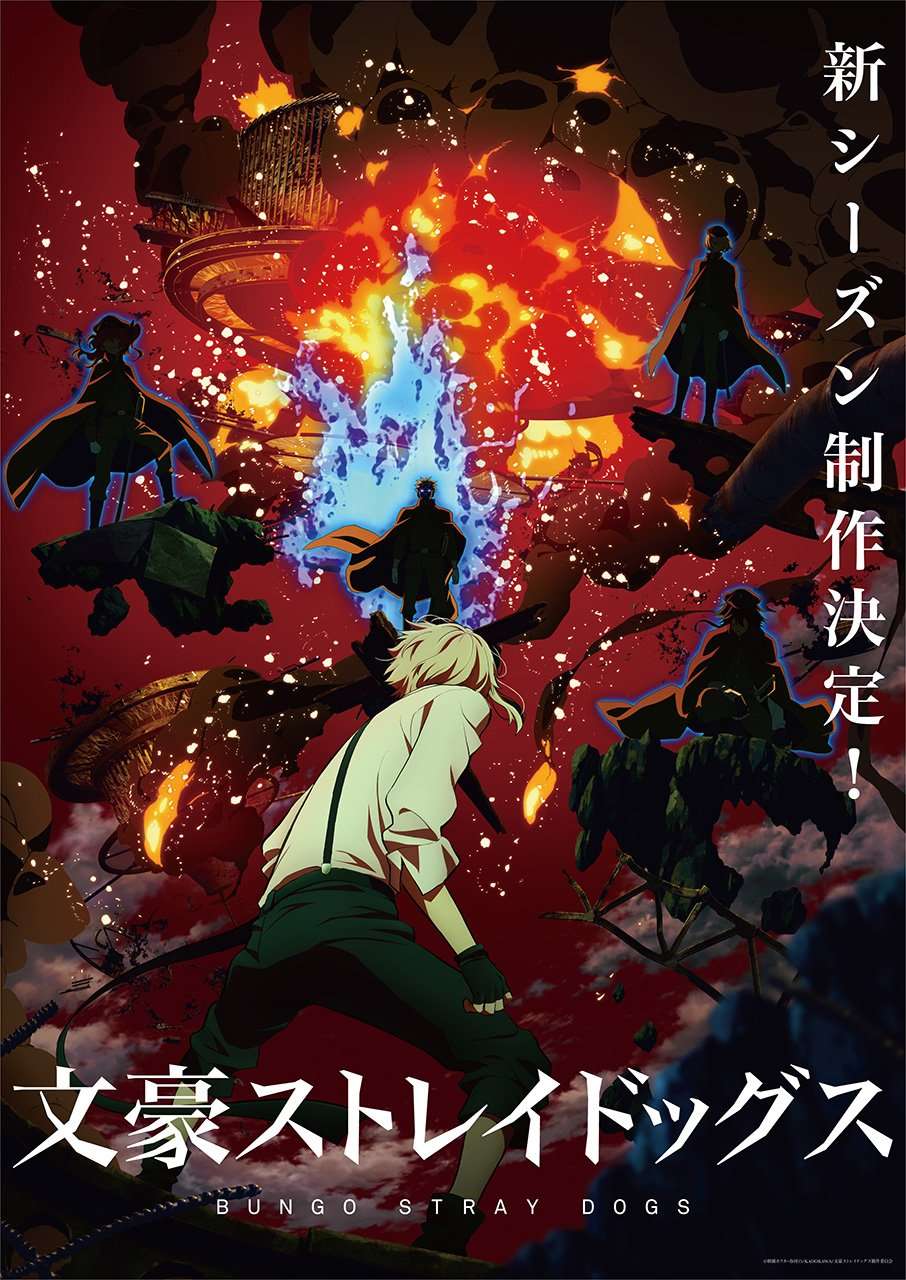
An elusive tiger has been terrorizing Atsushi Nakajima’s orphanage for weeks, but he is the only one who knows about it. In suspicion of causing the strange events, the orphanage abruptly kicks out the 18-year-old and leaves him hungry, homeless, and wandering through the city.
Atsushi saves an eccentric man named Osamu Dazai from drowning while starving on the riverbank. Dazai, a suicide enthusiast and a supernatural detective, is investigating the same tiger that has been terrorizing the boy.
Eventually, Dazai and Doppo Kunikida uncover the mystery, but Atsushi is left in a bind due to the resolution. Various odd events force Atsushi into joining a firm of supernatural investigators, where he investigates unusual cases that the police cannot handle, alongside his many enigmatic co-workers.
A special group of literary authors gets together. What happens? The result is Bungou Stray Dogs. Only this time, they possess special abilities in a world full of mystery, crime, and all kinds of other dark phenomena that will take your breath away. Bungou Stray Dogs is proof that supernatural fiction can still work in an attractive manner.
It gives us a view of a select group of people with their own individual talents, characteristics, and lifestyles that make us wonder about their everyday lives. It looks pretty cool on paper, with a cast of badasses named after famous literary authors. Additionally, their special powers also stem from their well-known literature.
In general, Bungou Stray Dogs does not require any previous knowledge of literature to watch. Characters, themes, and storyline provide enough entertainment so prepare yourself for an exciting ride.
26. Detroit Metal City
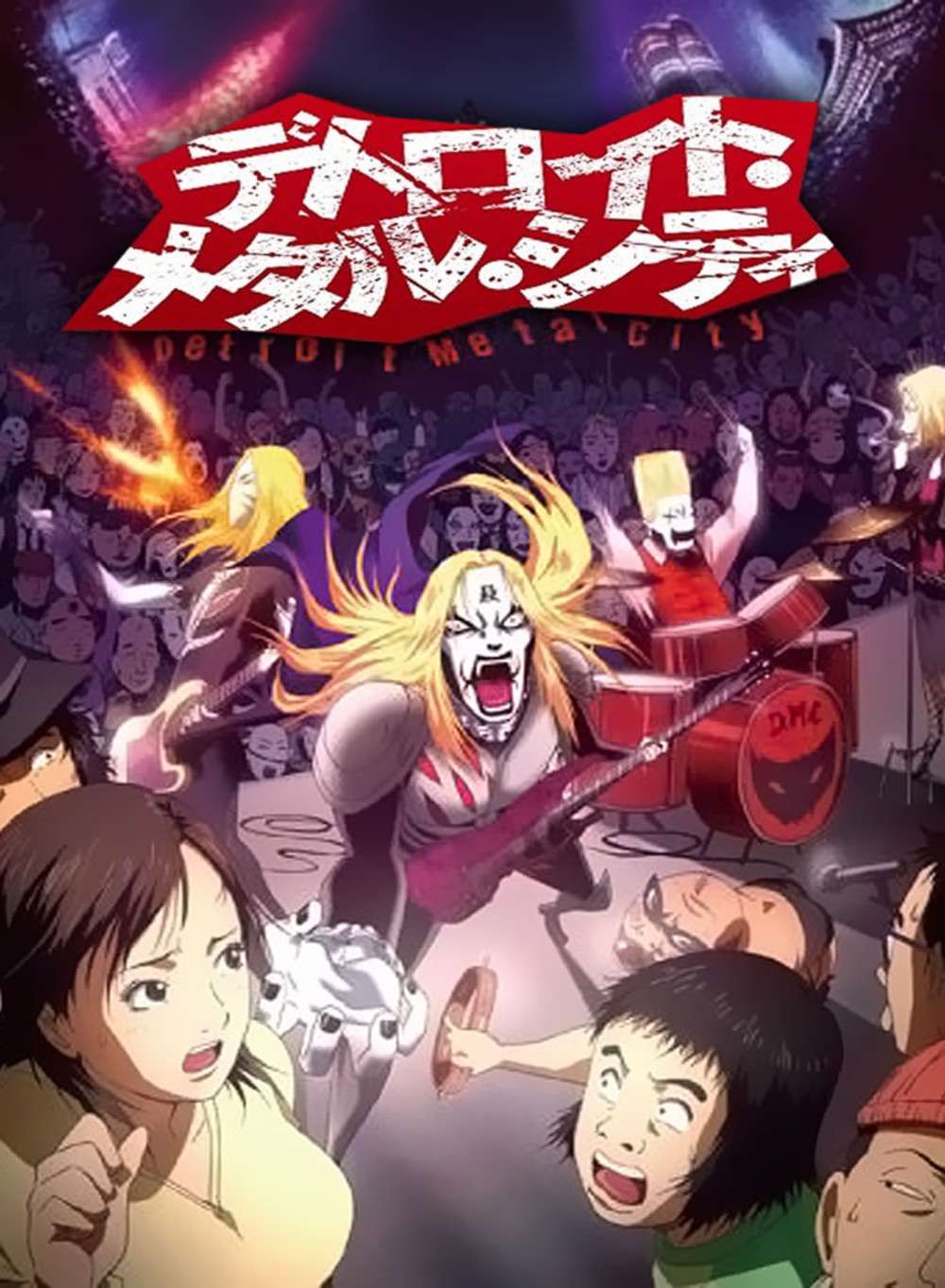
Detroit Metal City (DMC) is an indie band known for its dark and crude style of death metal. Johannes Krauser II, its extravagant lead singer, is especially infamous as a demonic being who has risen from hell itself to lord over all mortals, or at least that’s what people portray him to be.
Krauser II is only the alter ego of a college graduate named Souichi Negishi, who is unknown to his many devotees. Though he is soft-spoken, peace-loving, and would rather listen to Swedish pop all day, he must perform at DMC’s garish concerts to make ends meet.
Detroit Metal City follows Negishi’s hilarious misadventures as he juggles his hectic band life, a budding romance, and dealing with his incredibly devoted and obsessive fans.
DMC’s rabid fans are the funniest part of the series. They perceive Negishi’s Krauser persona as a godlike act from their evil hero. Though he tries his best to win over the girl of his dreams, being in the most offensive band around keeps him from succeeding.
As Negishi desperately tries to hide his true identity, we can only laugh and feel a little sorry for him.
The short series Detroit Metal City packs in as much hilarity as possible. His life spirals out of control from the moment he boards the train to Tokyo and waves goodbye to his mother.
27. Dorohedoro
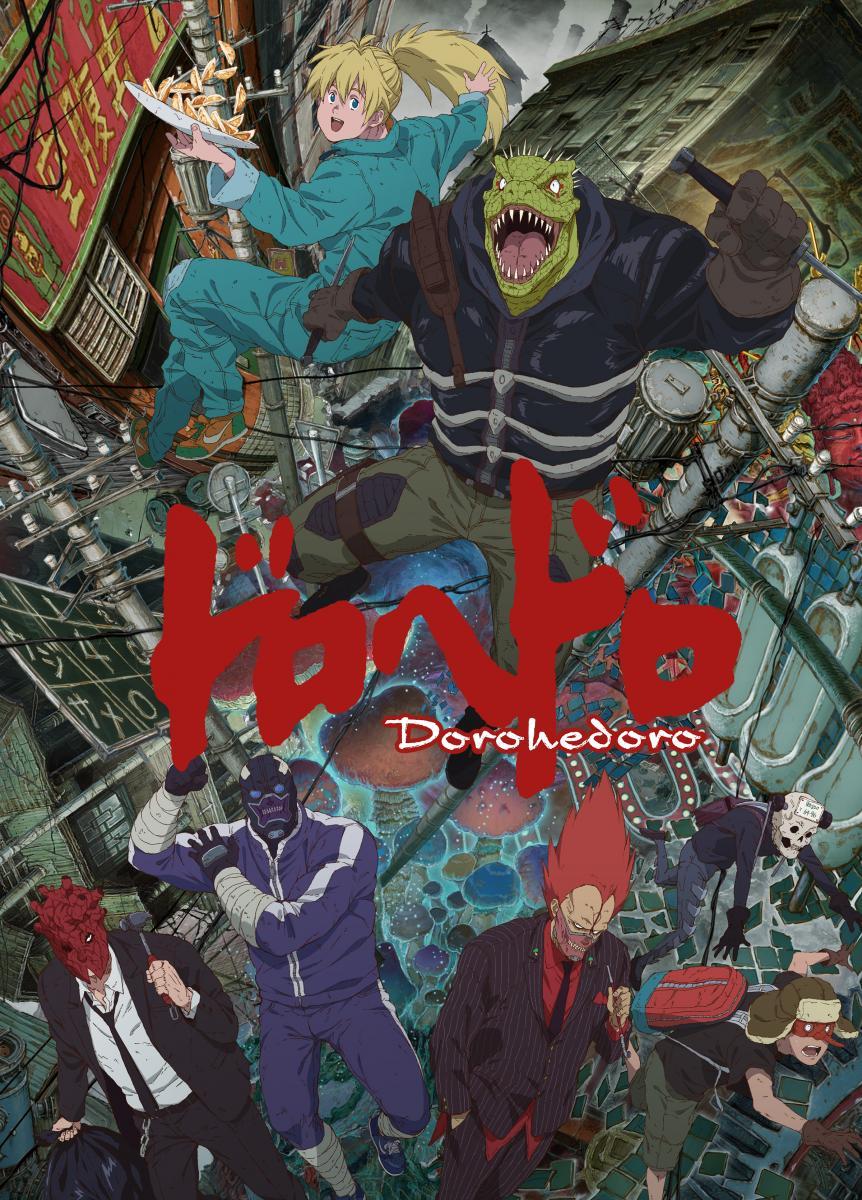
As the name suggests, Hole is a dark, decaying, and disorderly district where the strong prey on the weak and death is commonplace. It is a realm separate from law and ethics, a place of testing for its magicians.
The magic users, who occupy the top echelons of their society, regard the denizens of Hole as nothing more than insects. Every day, the powerless Hole dwellers are mutilated, murdered, and made experiments without a second thought.
Since magic users enjoy free access to and from the cesspool, they appear indomitable to most-apart from a few. This is particularly true of Kaiman, who is more of a reptile than a human. With only his trusty bayonets and immunity to magic, he hunts them in a heedless quest for answers.
Despite being cursed by his appearance and afflicted by nightmares, magic users are his only hope of restoring his life to normal. Nikaidou, the owner of Hungry Bug, is his greatest ally since his stomach is the biggest obstacle.
Dorohedoro blends humor, lightheartedness, and death and carnage in a gritty world of hellish design. It weaves an unearthly world of unearthly origins and dreary appearance that is not for the faint of heart or easily disturbed by twists and turns.
This story stands out for a lot of reasons and isn’t something most anime viewers are used to seeing. This is achieved through a bizarre yet strangely straightforward set-up, set in a very detailed and intriguing world constantly doling out more information.
28. Black Lagoon

Roanapur is a depraved, crime-ridden city in Thailand where neither the authorities nor the churches remain untouched by the claws of corruption. In addition to being a haven for degenerates and convicts alike, the city is notorious for its illegal activities, often fueled by local crime gangs.
Rokurou Okajima, a businessman from Japan, has been living a dull and monotonous life, but when he gets the chance to change things up with a delivery trip to Southeast Asia, he takes it. Black Lagoon, a mercenary group operating in Roanapur, captures Rokurou during his business trip.
He will be used as a bargaining chip in negotiations that ultimately fail. Having been abandoned and betrayed by his former employer, Rokurou decides to join Black Lagoon. As he adapts to the new environment, he must prepare himself for the bloodshed and tribulation to come.
Black Lagoon explores the depths of virtue and morality in non-stop action. Rokurou struggles to maintain his values and philosophies as he slowly transforms into a ruthless mercenary.
The anime is a collection of short stories that tell the story of the characters in a particular time period. However, the short stories are excellent and definitely worth watching if you enjoy action and gunfights. The story places the main characters in a variety of situations in which they are placed by their jobs.
This anime is all about its characters. They are all so individual in their own way that you feel they possess emotions.
29. Tokyo Ghoul
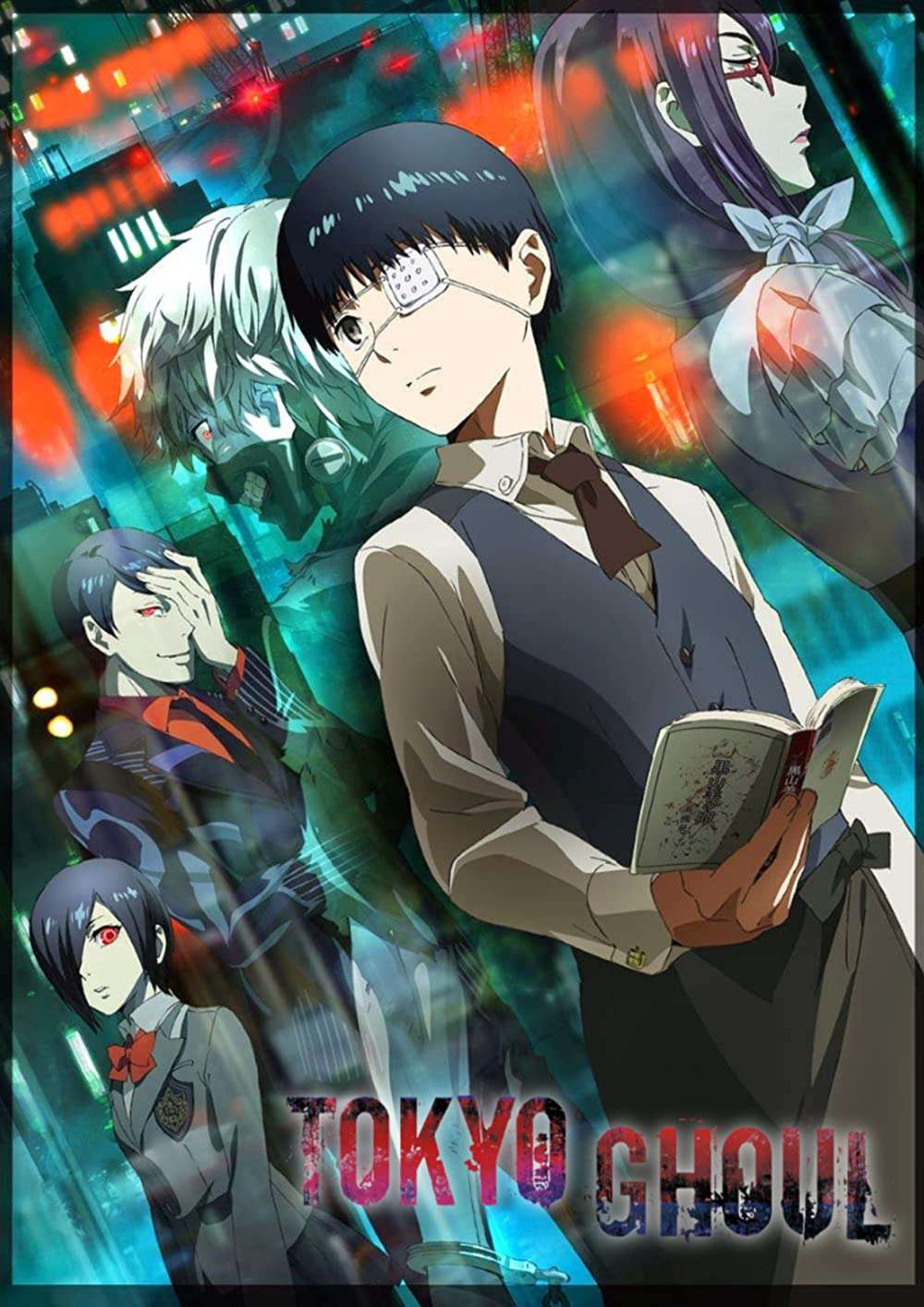
In Tokyo, vicious creatures called “ghouls” coexist with humans, making it a cruel and merciless city. These bloodthirsty savages thirst for human flesh, which keeps the residents of this once great metropolis in constant fear. Ghouls pose the greatest threat because they are able to mimic humans and blend in with society.
Ken Kaneki, a shy, bookish college student, is instantly drawn to Rize Kamishiro, a fellow reader. Kaneki is forced into the darkness of the ghouls’ inhuman world when he discovers Rize is not what she seems.
After being rescued by the enigmatic waitress Touka Kirishima, Kaneki begins his new life as a half-ghoul/half-human who must integrate into both societies.
Tokyo Ghoul is one of the best, and it will keep you on your toes. It is most likely to appeal to gore fans due to its darkness and gore, though anyone can enjoy it.
This anime does a good job of executing the concept of gaining new powers and meeting new kinds of people, though it isn’t a new concept in anime. It emphasizes that there is no clear distinction between good and evil and that it all depends on one’s perspective. On a deeper level, it reminds us not to jump to conclusions without considering others’ circumstances and challenges.
In addition to action-packed scenes, the show is filled with touching scenes in which people cry, scream, and talk to each other in a meaningful moral dialogue.
30. Kingdom
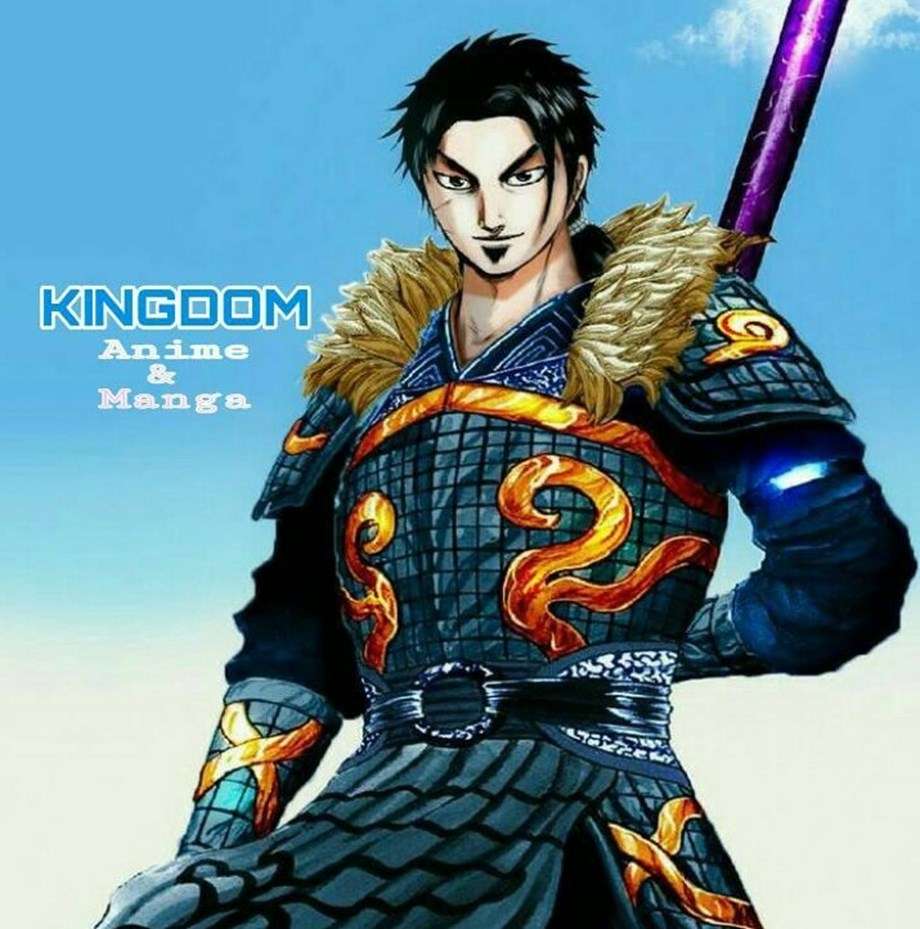
During China’s Warring States period, a raging dragon ravaged the land for 500 years, many kingdoms rose and fell, paving the way for the next generation of kings and generals to fight for dominance. The endless cycle of warfare eventually led to the rise of seven powerful states.
During the reign of the King of Qin, Li Xin, an orphaned slave, trains vigorously with his best friend, Piao, who shares his dream of becoming one day a Great General of the Heavens. They are forced to part ways, however, when Piao is hired by a retainer of the King to work in the royal palace.
As the result of a coup d’état, Piao returns to Xin half-dead on a mission that will bring him face-to-face with China’s young King, Ying Zheng, who bears a striking resemblance to Piao. Xin takes his first steps into the blood-soaked pages of China’s history in Kingdom. On his long journey to become a Great General of the historic Seven Warring States, he must carve his own path to glory.
The show throws a lot of emotion at you; battles get quite tense, and people may find themselves writhing in agony as they wait to see what will happen next, especially when characters find themselves in a hopeless situation.
Obviously, survival is the main objective, but the soldiers also exhibit a certain sense of chivalry by withdrawing after their commander is killed, even when greatly outnumbered. Throughout, the pacing is almost flawless, never dragging, but also not moving too fast in order to lose viewers’ attention.
31. Phantom: Requiem for the Phantom
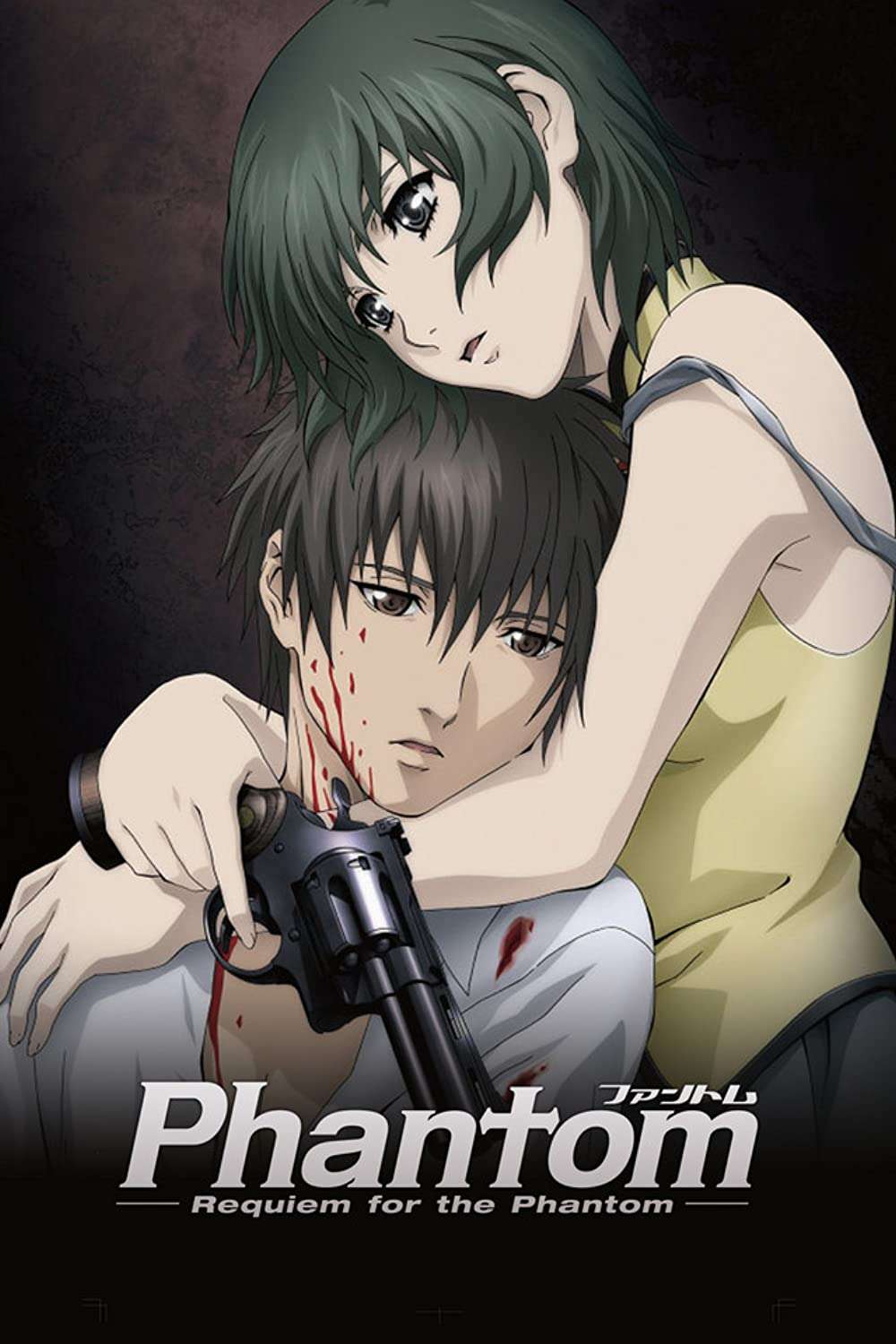
America is a mafia-ridden nation where assassinations are commonplace. Phantom, a near-invincible human weapon used by a mysterious company named Inferno, is behind most of these dealings.
Phantom’s latest murder is accidentally witnessed by a Japanese tourist. The tourist hides in a secluded building in a desperate attempt to escape. The Phantom is revealed to be a young woman called Ein, and the leader of the Inferno, “Scythe Master,” captures and brainwashes the tourist.
Zwei, a once peaceful tourist, now serves as a puppet of Inferno and has no memories. Zwei is drawn into a world of lies, deceit, and violence and must fight to survive, hoping that one day to regain his memories and escape this death-defying world.
Prepare yourself for a world filled with violence, betrayal, deceit, and madness. As each episode is action-packed, you’ll be glued to the screen. Everyone is capable of killing or will kill when their survival is at risk. It is this choice that will change the protagonist’s life forever. It’s not like he wanted to go down that path, more like they forced him.
Despite the fact that both protagonists know they have feelings for each other, their status makes it difficult for them to act on those feelings. Also, time skips make this series more interesting as it will surprise the viewers since everything and everyone has changed after it.
After seeing an episode, you’ll just keep longing for more and more because every episode leaves you hanging.
32. Kuuchuu Buranko
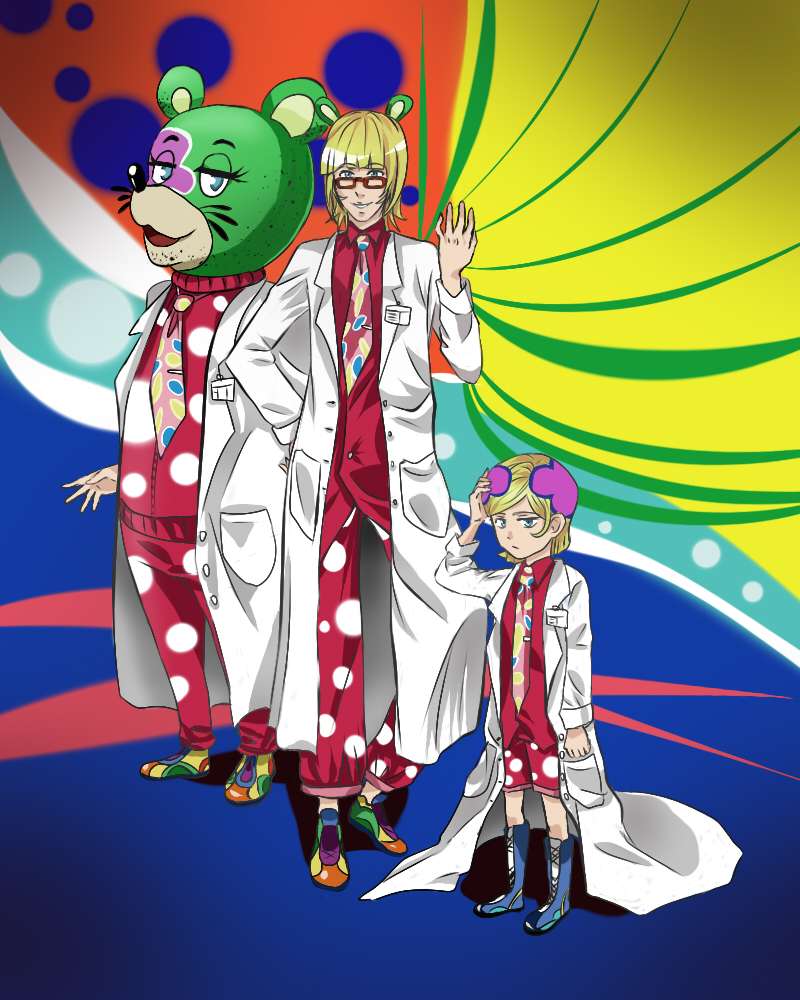
Ichirou Irabu, a psychiatrist at Irabu General Hospital, is not unfamiliar with the world of psychology. During his rounds, he and his nurse Mayumi encounter several patients suffering from mental illnesses that interfere with their daily lives.
The seductive Mayumi, with her short pink uniform and her spellbinding looks, should be avoided by patients. In contrast, the doctor seems to have three distinct personalities: a child with a lab coat; a young, intelligent man with feminine traits; and an outgoing, selfish green bear.
The doctor sometimes forgets his role as a doctor while treating his patients in questionable ways as well as trying to gain something from them outside of his profession.
Each patient’s struggle to face the nature of their distress is woven together by an obvious yet invisible thread.
The stories all take place within ten days, and all of them have an impact on one another, whether minutely or dramatically. For the most part, the stories are very lighthearted, and the comedy is boundless. The interwoven ten-day tale of the wacky doctor and his just-as-wacky patients will surely amuse you.
It possesses a great cast of characters, just about every one of them memorable. Its cast features Irabu, Mayumi, a nonchalant maid-nurse who supplies the patients with injections, and Fukuicchi, a live-action doctor who pops up from time to time to explain certain things they may not understand.
Patients make up the interchanging cast. The characters appear in more than one episode, but only one episode is mainly about them.
33. Non Non Biyori
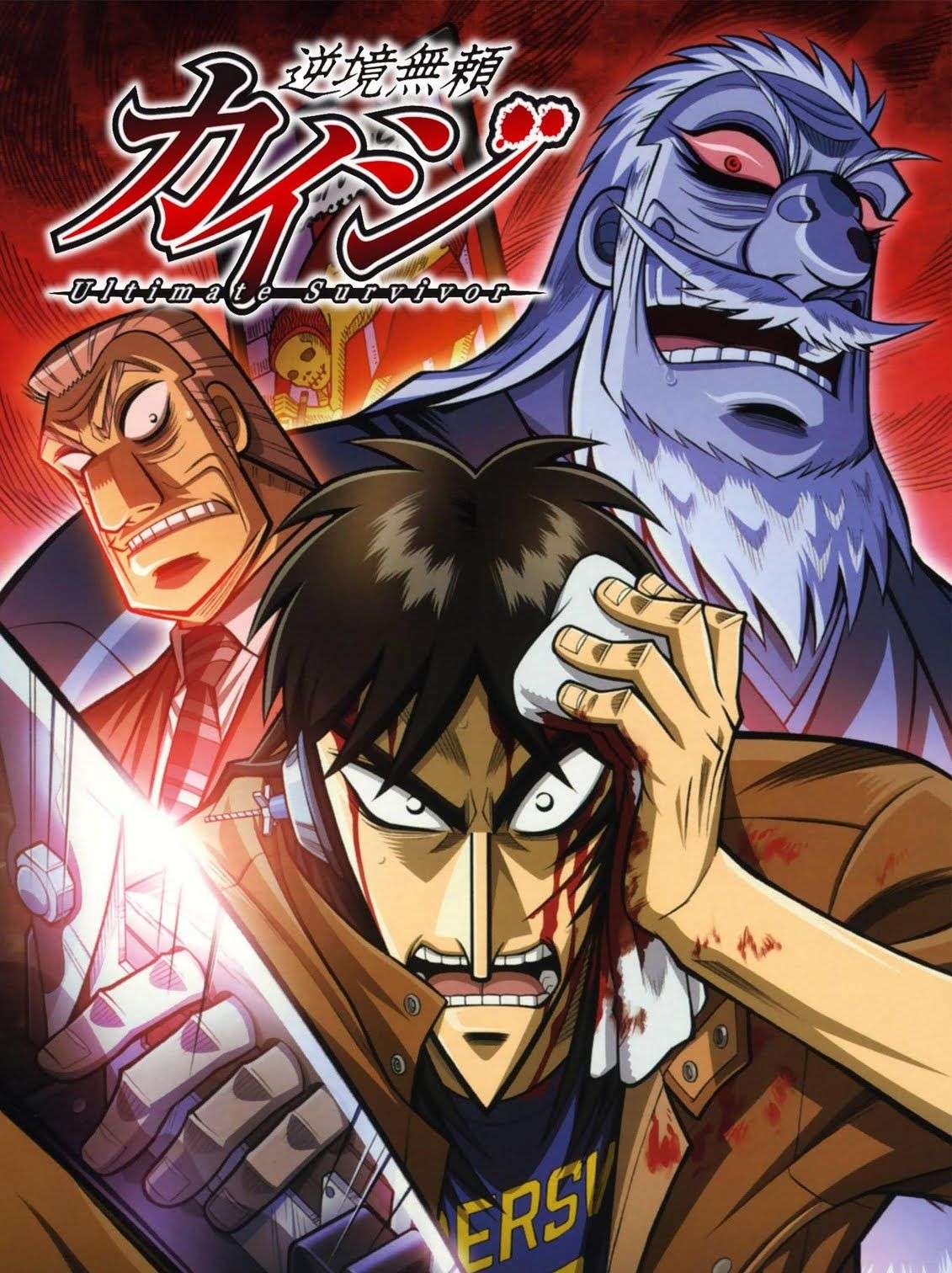
To most, Asahigaoka might seem like typical, boring countryside; however, with five students of varying ages sharing the only class in the only school in the village, no day can be considered boring. Renge Miyauchi, a first-grade student, brings wit, curiosity, and her distinctive catchphrase, “Nyanpasu!” to the class.
The Koshigaya siblings consists of the quiet ninth grader and older brother Suguru, diminutive eighth grader Komari, and mischievous seventh grader Natsumi. In light of the arrival of Tokyo-raised fifth grader Hotaru Ichijou, who appears to be overdeveloped for her age and has an air of maturity about her, this lively and vibrant group of five classmates is completed.
In Non Non Biyori, an unlikely group of friends engages in their own brand of fun and frolic as they struggle playfully with the realities of living in a rural area.
It is a simple story. Each day follows the lives of four girls of various ages living in the same rural village and attending the same school. Everything that happens is based on their everyday lives, with events that are both realistic and completely believable.
The series is episodic in nature, though characters and settings are built up gradually over time so that there is no lack of progress. Every episode contains one or two stories that are a delight to watch and will melt your heart. The humor is lighthearted in tone and is aimed at adding to this heart-melting effect rather than at making you laugh out loud.
34. Touhai Densetsu Akagi: Yami ni Maiorita Tensai
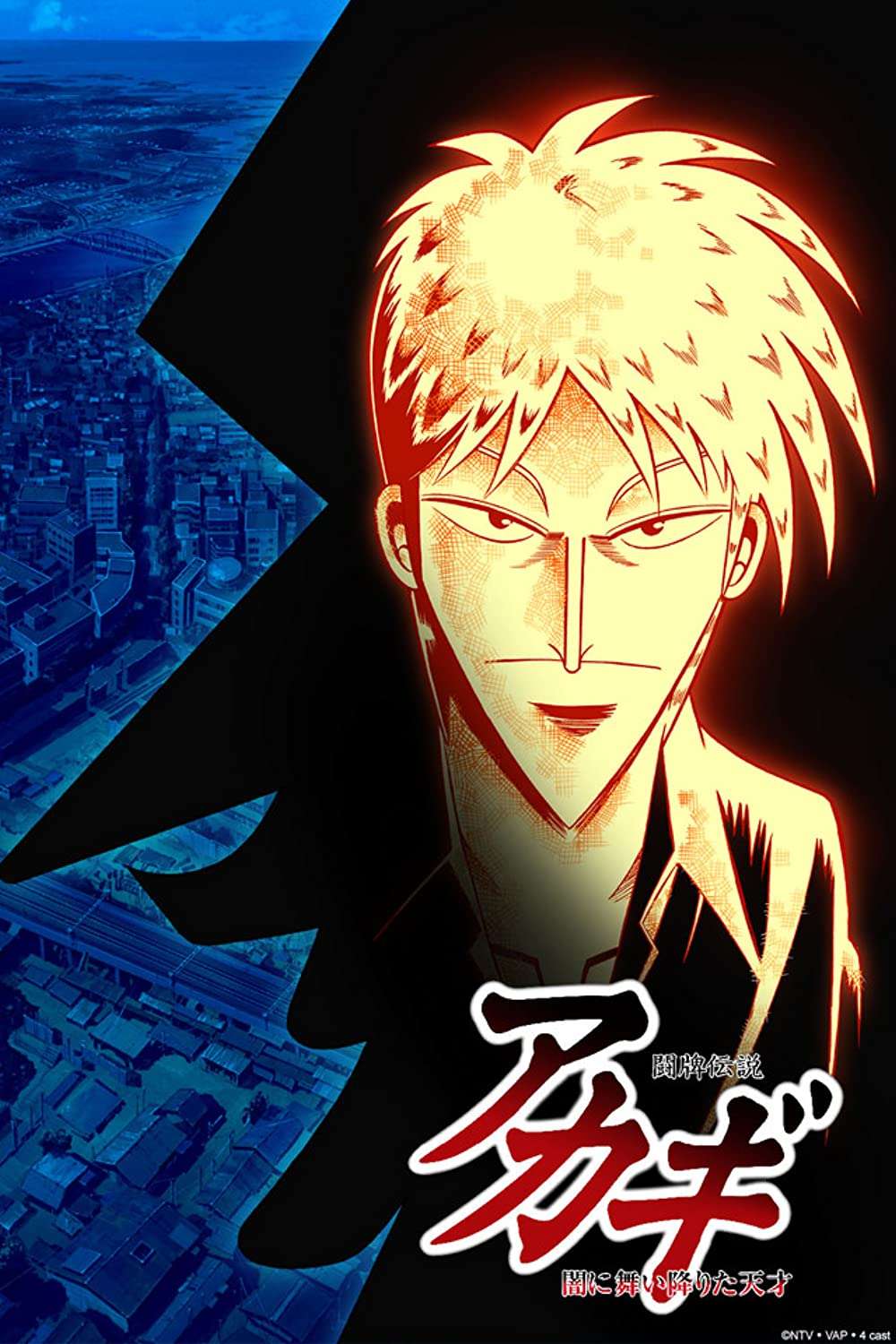
The game of Mahjong is often played with friends and family, but it is also played in the darkest corners of society. Gambler Nangou has amassed a debt of over three million yen. As a last resort, he wagers his life on a game of mahjong with the mafia in order to clear his record. Nangou, as the game progresses, only gets further from the prize and closer to death.
As all hope seems lost, Shigeru Akagi, a young boy running from the police, suddenly bursts into the game parlor. Trying desperately to turn the game around, Nangou gives the game to Akagi after teaching him a few rules. Seeing Akagi sit down to play, the mafia can only smirk.
They are soon to learn, however, A man who is unafraid of death—surely destined for greatness.
Akagi is a cold and relentless character. He cares little for his own life or for money. He stops at nothing less than crushing the will of his opponent to win in the heat of the gamble. It will be difficult for you to understand what he is going through because he is a prodigy and an enigma.
The mahjong battles are fantastic, keeping you on the edge of your seat for the entire time, but the real reason why the mahjong battles draw the viewer in is the way the characters interact or, more specifically, the psychological battles that are played out in front of our eyes.
35. Drifters
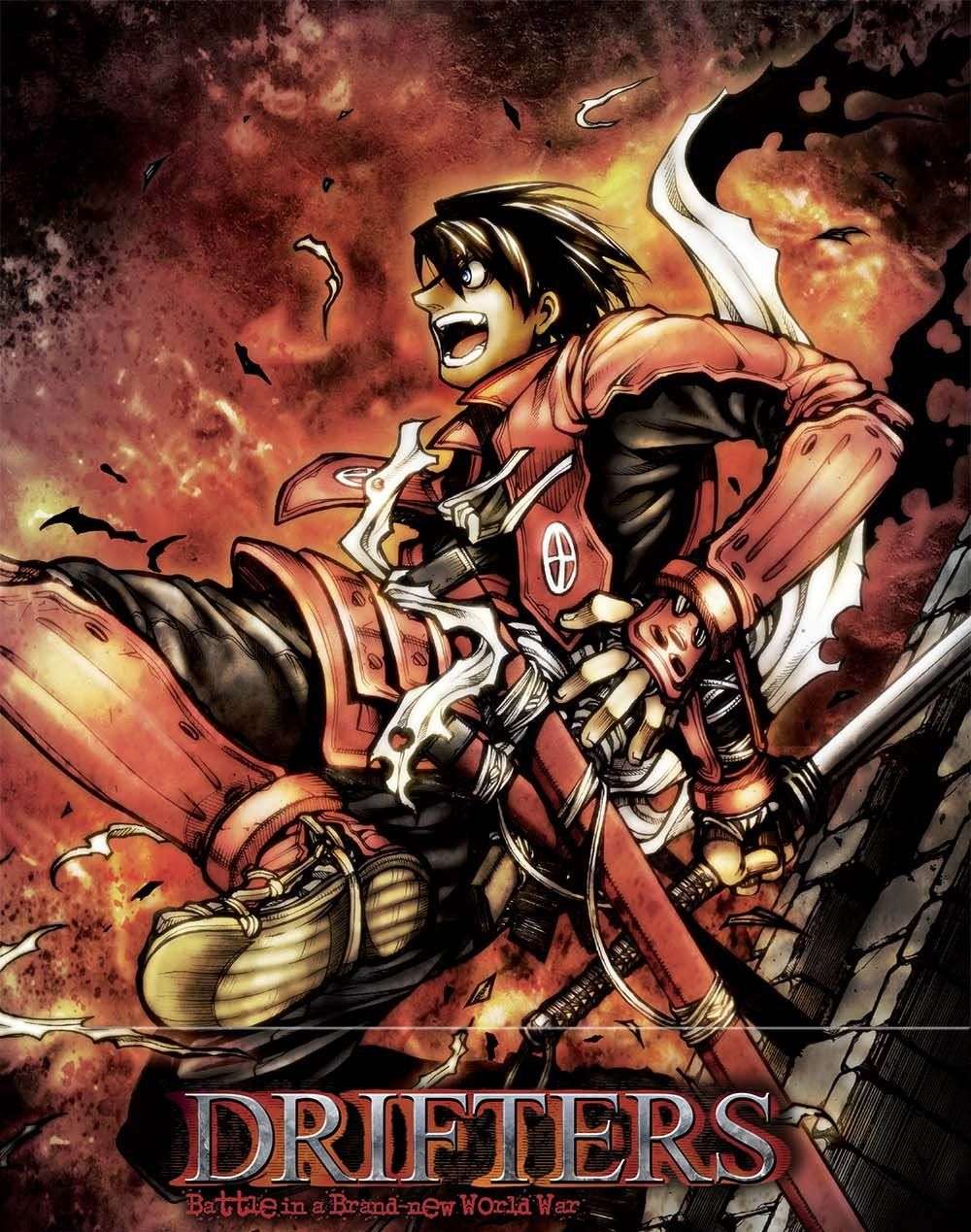
When Toyohisa Shimazu is critically wounded at the Battle of Sekigahara in 1600, he finds himself in a modern, gleaming white hallway. As Toyohisa is confronted with only Murasaki and hundreds of doors on both sides of him, he is pulled into the nearest door and into a world incomparable to his own.
All kinds of fantastical creatures inhabit this strange land, in addition to warriors from Toyohisa’s history who were thought to be dead. As Toyohisa befriends the infamous warlord Nobunaga Oda and the ancient archer Yoichi Suketaka Nasu, he learns of the political unrest ripping through the continent.
Additionally, they have been called upon as “Drifters” to fight against the “Ends,” those responsible for building the Orte Empire and attempting to destroy the Drifters. As the Ends become more powerful, so does the Empire’s persecution of elves and other demihumans.
Against the Ends, Toyohisa and his group of unconventional heroes are set to fight in a new world war in order to help the Empire’s people.
An incredible aspect of this experience is that the characters are historical figures from a variety of different eras. Each character is beautifully portrayed, and once you start watching it, if you are not familiar with the characters, you are inclined to learn about their stories because they are so interesting to watch.
36. Ookiku Furikabutte
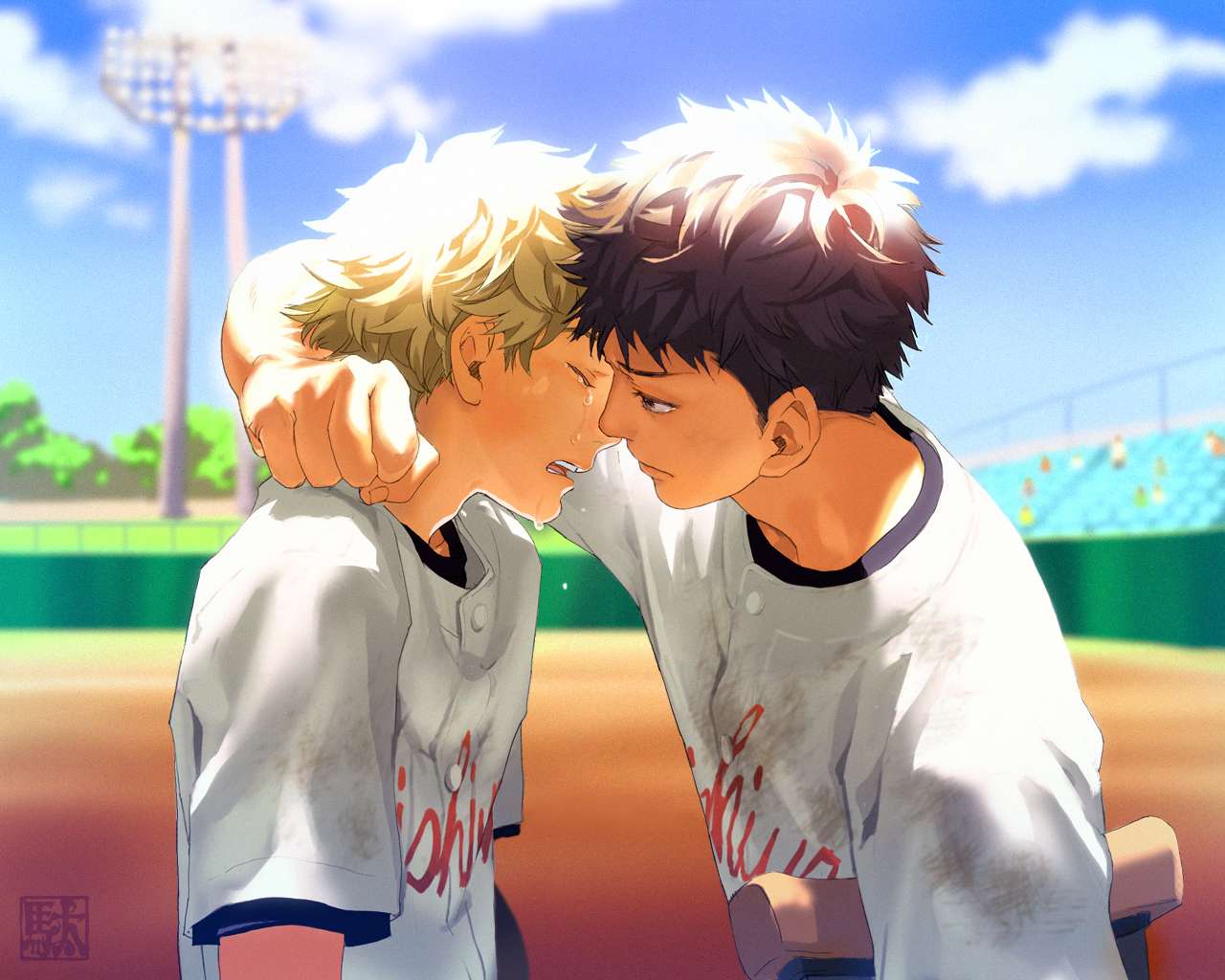
Due to his poor pitching, Ren Mihashi’s middle school team was unable to win. The constant losses eventually led to his teammates bullying him, and eventually to the point where they no longer cared about winning. As a result, Mihashi graduated with low self-esteem.
Mihashi decides to attend a high school in a different prefecture where he is not planning to play baseball. As soon as he arrives at Nishiura High, he is forced to join their new team as the starting pitcher.
With the help of the catcher Takaya Abe, Mihashi begins to realize that he is in a place that embraces him for who he is; he starts to have more confidence in himself. Abe is determined to help Mihashi become a pitcher worthy of being called an ace.
The story is not only simple to figure out but also entertaining enough to keep people glued to the screen.
Ookiku Furikabutte is all about the characters. These characters are some of the best in anime. At the end of the show, you feel like you have some sort of bond with every character, including the opposing teams. The feeling is amazing when you root for both Nishiura and the rival team to win, even if only one team can win.
The premise of this anime is nothing new. But this show proves that a talented writer can take any shop-worn premise and create solid gold from it.
37. Elfen Lied
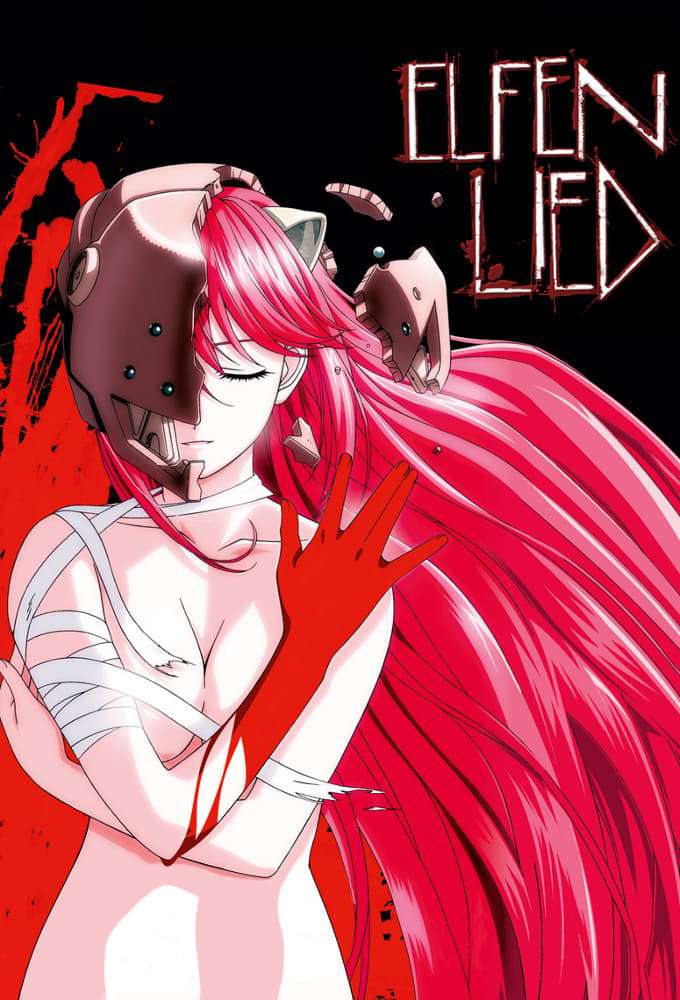
As a “Diclonius,” Lucy has a short pair of horns and invisible telekinetic hands, and as such, she’s been subjected to the government’s inhumane experiments. As Lucy escapes her captors, she unleashes a torrent of bloodshed, corrupted by confinement and torture.
In her breakout, she suffers a severe head injury, leaving her with a split personality: someone with the mentality of a harmless child with a limited vocabulary. She stumbles upon two college students named Kouta and Yuka, who unknowingly take in an injured fugitive, unaware of her murderous tendencies.
Their lives will be changed by this act of kindness, as they soon discover themselves entangled in the shadowy world of government secrecy and conspiracy.
The beginning of Elfen Lied is one of the bloodiest the anime can have. The brutal start of the series may frighten many viewers away, but the series that lies beyond it is incredible. The style of Elfen Lied blends science fiction, slice-of-life, psychological, romance, and horror with surprising results.
Lucy’s split personality, as well as her inner turmoil, are clearly represented in the outstanding way in which she makes this transition from calm and cute to dark and tense in an instant; this repetition is consistently executed in an outstanding manner in the series.
One of the most intriguing aspects of Elfen Lied is the well-developed characters. All of the characters retain a mixture of light and darkness. This anime does not clearly separate good from evil as most others do.
38. Gungrave
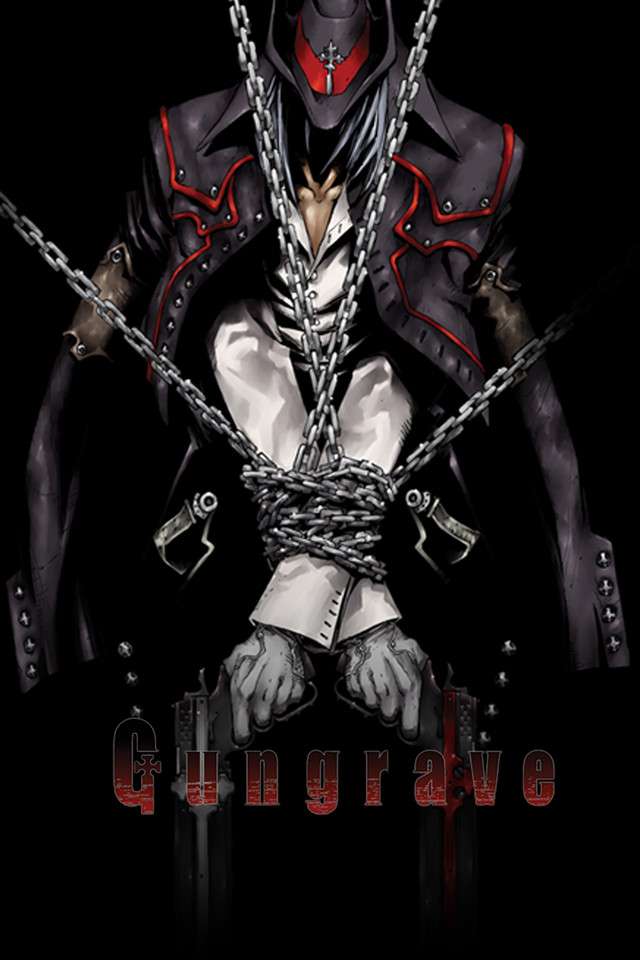
Harry MacDowel and Brandon Heat, two friends so close they could be considered brothers, discover one fateful day how appallingly merciless the world around them can be.
Before then, they lived simple and easygoing lives, being involved in local brawls, seducing women, and committing petty theft to earn a living and pass the time. They missed the point that happiness is fleeting, and change is inevitable in this cruel world.
As Brandon and Harry start their lives at the bottom of the food chain, they are accepted by Millennion, the largest and most infamous mafia syndicate in the area.
Harry strives to one day replace Big Daddy as the supreme leader of Millennion, whereas Brandon simply wants to support his friend and appease Big Daddy, who has taken custody of the woman Brandon loves.
This sweeping tale of friendship, betrayal, and avarice takes place over the course of several years, all the while building to the story’s thrilling conclusion.
It is true that the action in this show is plentiful and exhilarating, but it is not the show’s main attraction. The story is touching and meaningful. It’s all there: love, hate, greed, betrayal. From start to finish, you will see the lives of these men. Watch them go from nobody street thugs to top dogs. You’ll love the ending. There are no lingering questions at the end.
39. Jormungand

Jonathan “Jonah” Mar grew up in a conflict-ridden environment and hates weapons and those who deal with them. Jonah has little choice but to take up arms when Koko Hekmatyar, an international arms dealer, takes him on as one of her bodyguards.
As one of Koko’s bodyguards, Jonah has been tasked with protecting her from the countless dangers that come with her line of work, along with her other bodyguards, largely former special forces soldiers.
It follows Koko, Jonah, and the rest of the crew selling weapons under the international shipping company HCLI throughout the world. Due to the illegality of Koko’s work, she is constantly forced to sidestep both local and international authorities when doing business with armies, private militias, and foreign governments.
Aware that the CIA is always hot on her heels and that assassins lurk around every corner, Jonah and the crew must protect Koko and her dream of world peace at all costs.
Fans of the action genre will be glued to the screen with this show’s blood-filled spilling, rapid violence, and gun dominance at first glance. The first episode starts off with a full-throttle road war, and the bullets fly all over the screen.
There is no wasting of time in conveying the brutality and danger of being an arms dealer. It also finds a way to make the series relaxing with some heartwarming moments and comedic scenes. The crew’s teamwork and abilities are emphasized in Jormungand’s smooth pace.
40. Saint☆Oniisan

Jesus Christ and Gautama Buddha decide to take a break after thousands of years of hard work and rent a small apartment in Tokyo, Japan. Despite struggling to live incognito, the pair enjoys the luxuries of modern society, such as amusement parks and limited-time store sales.
Over the course of their time together, Jesus and Buddha celebrate each other’s holidays and watch the changing of the seasons. In Saint Oniisan, the two religious figures encounter new faces and deal with the challenges that come with living in Tokyo.
There is a very candid look in this anime at how people of different faiths can come together in these turbulent times and treat each other well without conflict. It likewise imparts good morals regardless of the viewer’s faith.
It is a great example not just for Christians and Buddhists but also for those of other faiths who are just interested in a humorous anime.
Despite being simple and fragmented, the story is captivating and charming- it depicts the everyday lives of two revered religious figures as they explore Japanese culture while on vacation. The plot itself is very laid back, and it will not get anyone thinking very hard, but it does its job by provoking thought about how one views one’s own beliefs.
This anime teaches some very important lessons about life, and even if one is not interested, it is a very nice slice-of-life anime.
41. High Score Girl
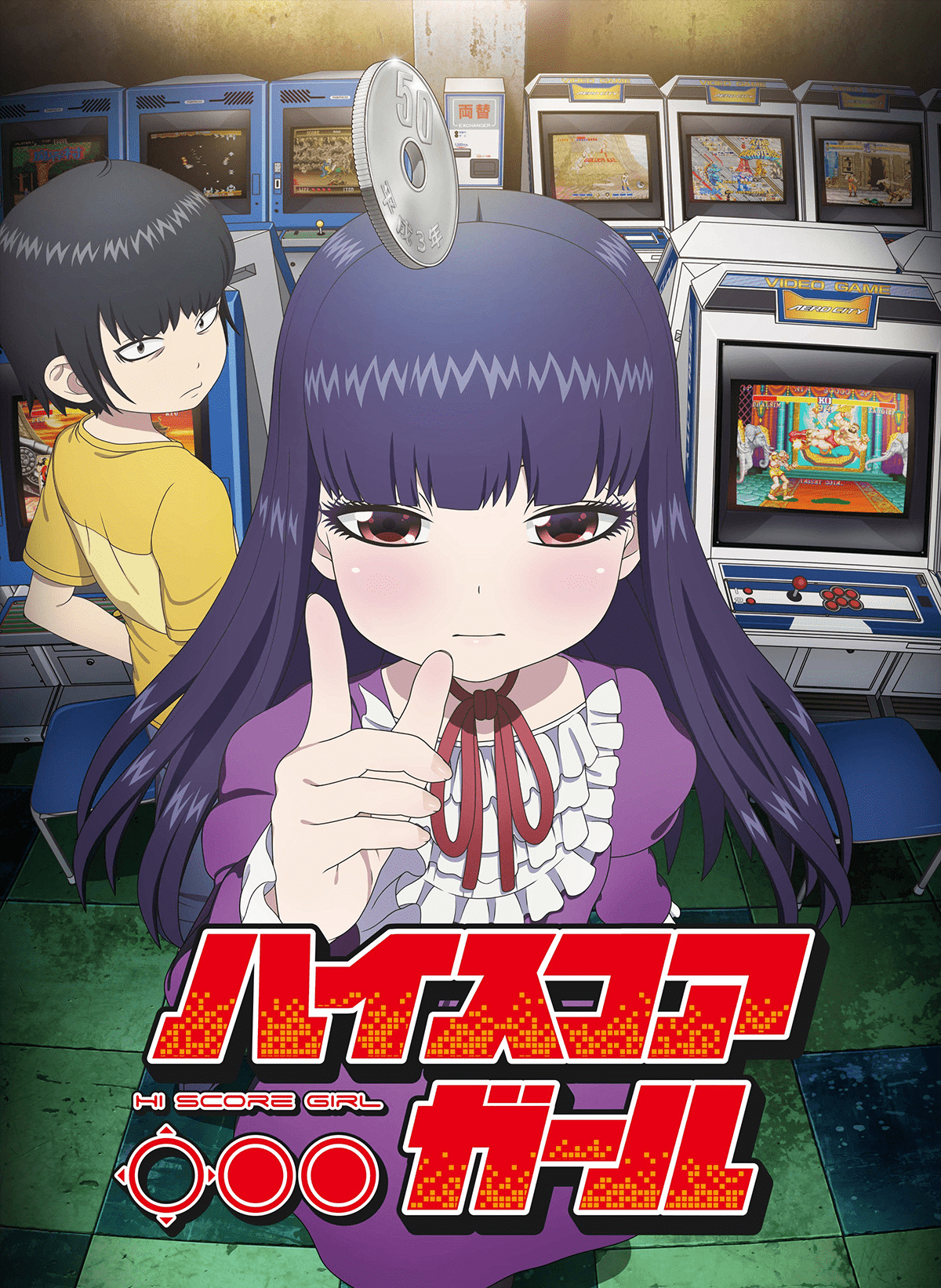
Video arcade games are the latest craze in 1991. It is a long shot to become a professional gamer in an industry that has yet to spread its influence.
Haruo Yaguchi, a sixth-grader, wants to follow that path. He has a talent for video games that have earned him respect in local arcades. His confidence and pride are shattered when fellow classmate Akira Oono beats him easily in Street Fighter 2.
It’s hard to imagine a perfect girl other than Akira. She’s beautiful, smart, and rich. Haruo had never been concerned about these things, as, despite his numerous shortcomings as a person, his dominance in video games was, to him, undeniable.
As a result, now that Haruo has come across someone he can rival, a part of him hates her. A part of him, however, aches for someone who can compete with him on equal terms, and Akira is more than capable.
High Score Girl is a sweet and brilliant story. In essence, the show is a coming-of-age story of two people who meet through their passion for gaming but also realize what the world is really like outside of gaming.
As the show progresses, it becomes more than just a typical rom-com anime as the anime slowly dives into deeper and more relatable themes. Even though this show is a rom-com at heart, it is still a great detail that adds more life to this show’s world.
42. Saraiya Goyou
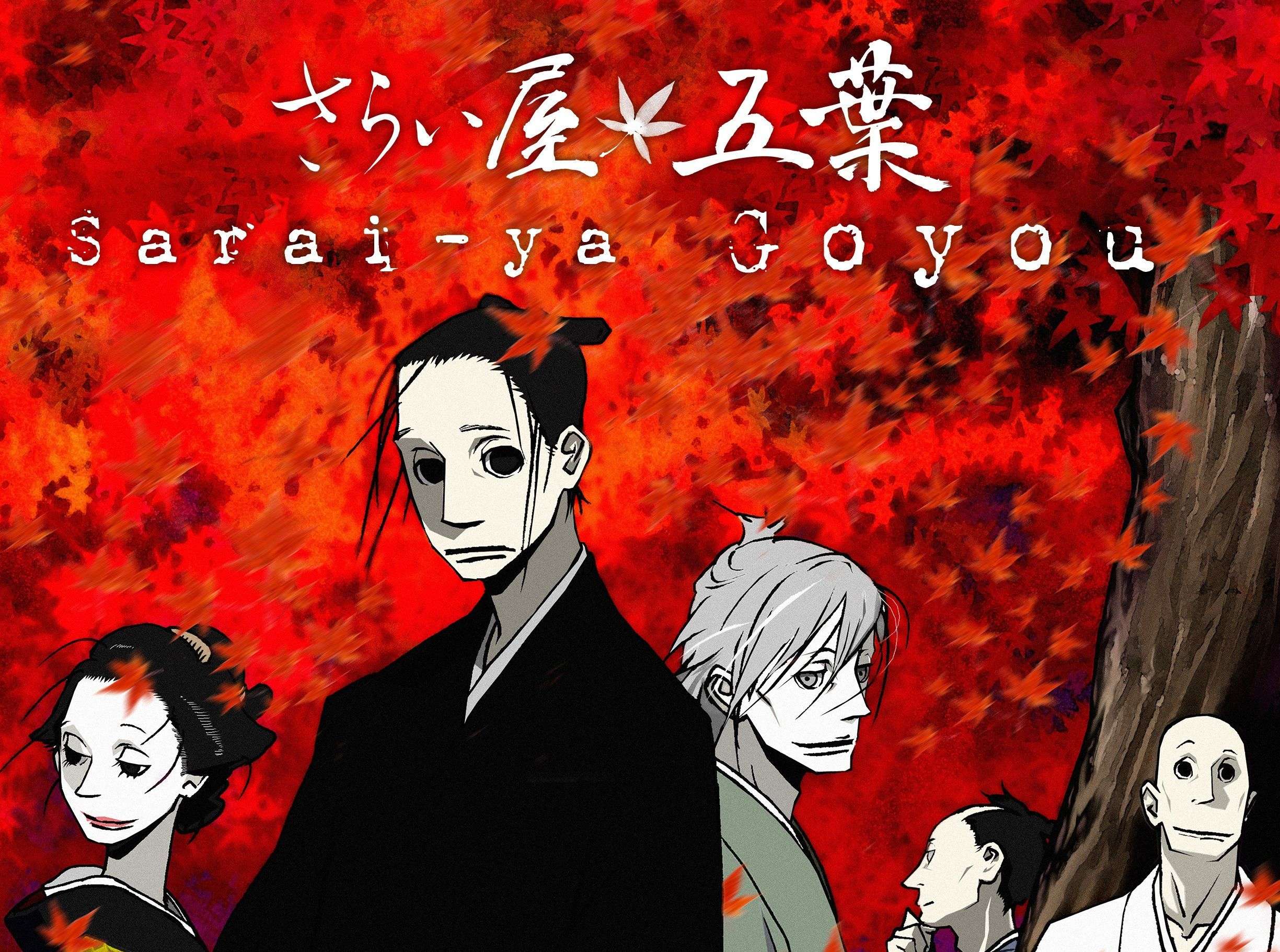
The story follows Masanosuke Akitsu, a wandering ronin in Japan’s peaceful Edo period. Despite being a skilled swordsman, Masa’s meek behavior has earned him the label of “unreliable,” and his employers often dismiss him abruptly, which causes him to doubt his resolve as a samurai.
Yaichi, a very carefree man clad in pink, approaches Masa when he is at his lowest point and hires him as his bodyguard on a whim. Masa is unaware that the job is not as innocent as it appears, and he is entangled in the illicit activities of the group headed by Yaichi.
Masa struggles with his own principles as he gets closer to the gang known as the “Five Leaves.” However, his curiosity drives him to explore the past and motivations of this mysterious gang.
Character-driven, this series wastes no time in revealing each member’s background, revealing their motivations for joining the gang in the first place. Five Leaves’ leader, Yaichi, is perhaps the most interesting member.
His calm demeanor is admired; however, he is perceived as mysterious because he keeps a lot of information about himself hidden. In the show, the other members discuss their feelings toward Yaichi.
As you watch the characters contemplate, plan, and embark on a few short journeys, the scenes move slowly and quietly. The members are more interested in gathering information and sneaking around rather than fighting even when they carry out a job.
That is not to say that the show never has its intense moments, though; it masterfully weaves in tension and drama just at the right times.
43. Golden Kamuy
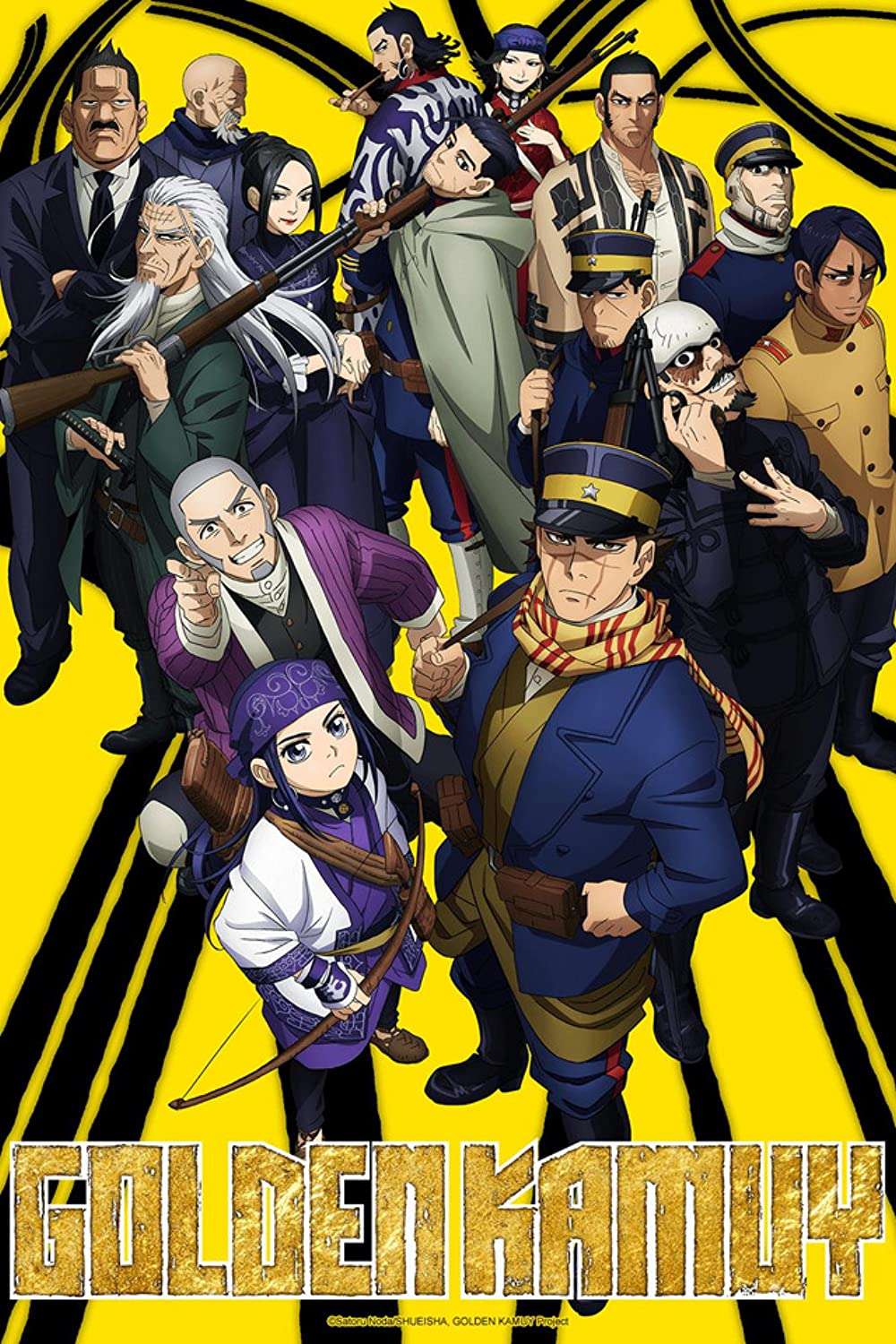
After the Russo-Japanese war, Saichi Sugimoto diligently pans for gold in early 1900s Hokkaido. As “Sugimoto the Immortal” for his death-defying actions in battle, the former soldier is seeking fortune in order to help his deteriorating family, especially his widow, who needs treatment overseas.
A drunken companion one day tells Sugimoto about a man who murdered a group of Ainu and stole a fortune in gold. His gold was hidden somewhere in Hokkaido before he was arrested by the police. In trade for a share of the treasure, the tattooed map he put on his cellmates’ bodies is the only clue to its location.
A drunken man’s corpse bearing the same tattoos described in the story leads Sugimoto to doubt the tale. As he collects his thoughts, a grizzly bear, the cause of the man’s death, approaches Sugimoto, intent on finishing her meal.
A young Ainu named Asirpa, whose father was one of the murdered Ainu, saves him. Using Asirpa’s hunting skills and Sugimoto’s survival instincts, Asirpa and Sugimoto join forces to find the lost treasure, one to get back what is rightfully her people’s, and the other to fulfill his friend’s dying wish.
The concept of hunters being hunted is an old one that has been used throughout history. What Golden Kamuy does differently is taking great care of its characters. The show makes you really invested in learning more about Sugimoto and Asirpa.
44. Hoozuki no Reitetsu
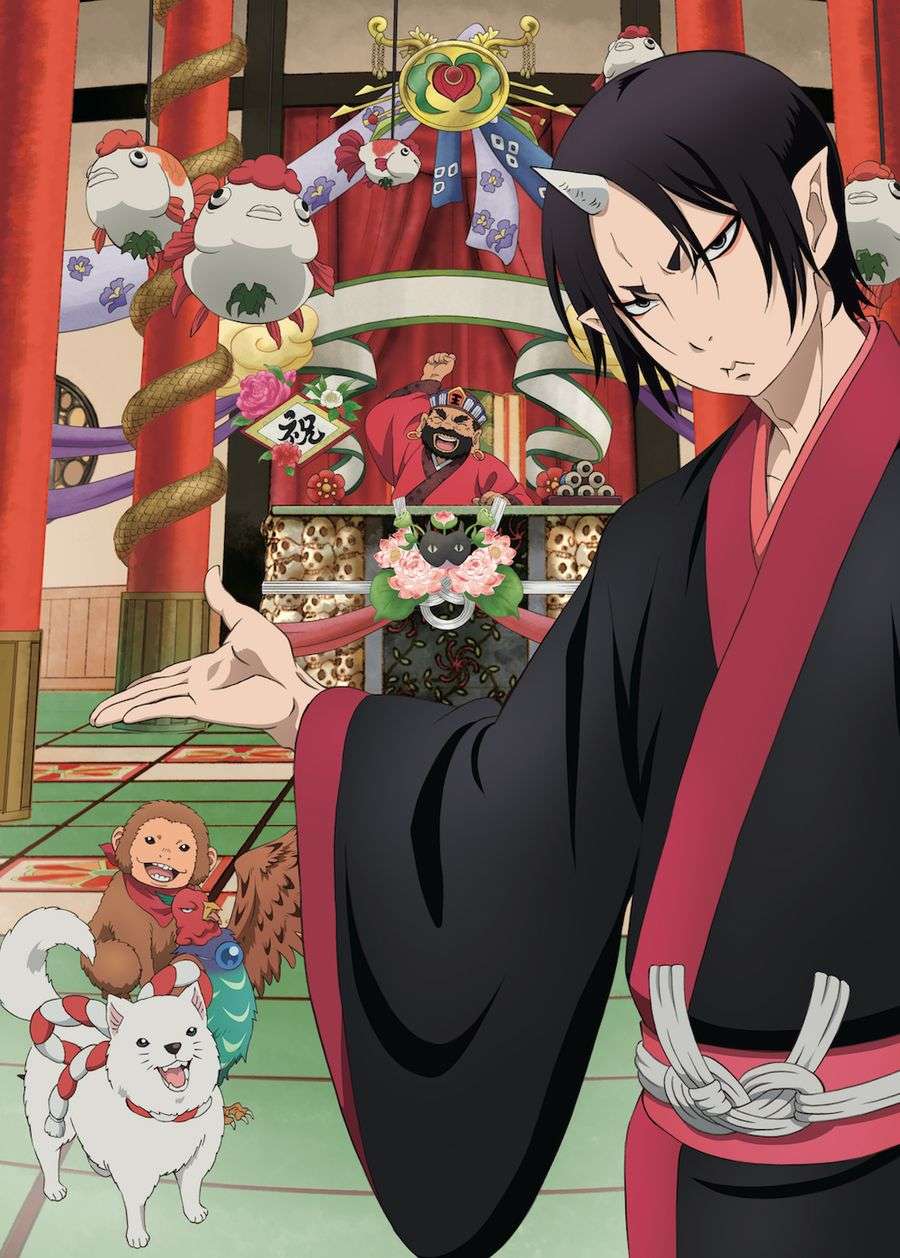
Hoozuki, chief deputy to Lord Enma, the King of Hell, is a demonic bureaucrat who keeps business running smoothly in Hell because of his demonic efficiency.
Whatever his role, the demon running the show from behind the King’s imposing shadow is ready to crush any challenge into a bloody pulp, whether it is the Momotarou of Japanese folklore or diplomatic missions from Judeo-Christian Hell. In a metaphorical sense, of course.
A micromanager with all the negotiating skills of Wall Street, Hoozuki no Reitetsu follows the level-headed and sadistic Hoozuki as he spends his days troubleshooting hell.
There are plenty of familiar faces from Japanese legends and East Asian mythology working middle management positions in this anachronistic and referential dark comedy. Just how difficult can it possibly be to manage employees from hell?
There aren’t many anime in the comedy genre that does well what Hoozuki no Reitetsu has done. That is delivering an amusing tale that parodies mythology. And it is made even more interesting as it teaches you the history behind the mythologies portrayed in the show.
This comedy in this show isn’t where there are simply running gags, well-delivered punchlines, and clichés that you would typically see in a comedy. The jokes in the show evolve. That is because the incorporation of different mythologies permits that. You see interactions that you normally wouldn’t see between demons of Euro Hell when meeting their Japanese counterparts.
The jokes and gags become even more complex as new characters are introduced, but never does the complexity of a joke require too much information of the actual mythology for one to understand.
45. Working!!

Souta Takanashi, who loves small, cute objects, cannot refuse the job offer that Popura Taneshima makes him to work at Wagnaria, a Hokkaido restaurant run by a family. Takanashi enjoys lavishly pampering Popura, which only fuels her worry about how young she looks.
Upon meeting the rest of his colleagues, he also quickly learns he must be on his toes, including the katana-wielding floor chief Yachiyo Todoroki, the intimidating head chef Jun Satou, the dangerously well-informed and subtly cruel sous chef Hiroomi Souma, the lazy manager Kyouko Shirafuji, and the shy waitress Mahiru Inami.
In this unique workplace comedy, Takanashi and his co-workers’ quirky personalities combine to create non-stop antics, shenanigans, and hilarity within Wagnaria’s walls.
There isn’t much of a story, really. Takanashi just goes to work at a family restaurant full of weird and unique co-workers and takes it from there for the rest of the series. However, even with the lack of a real story, Working!! makes up for easily with its characters.
Even with the lack of plot, the characters are well-done, in the sense that they achieve what this anime is meant to do, and that is to make us laugh. There are quite a number of running gags, but that is still more than enough to keep you watching. For an anime with a very minimal plot, it does a very outstanding job in entertaining its viewers and is definitely worth watching.
46. Shadows House
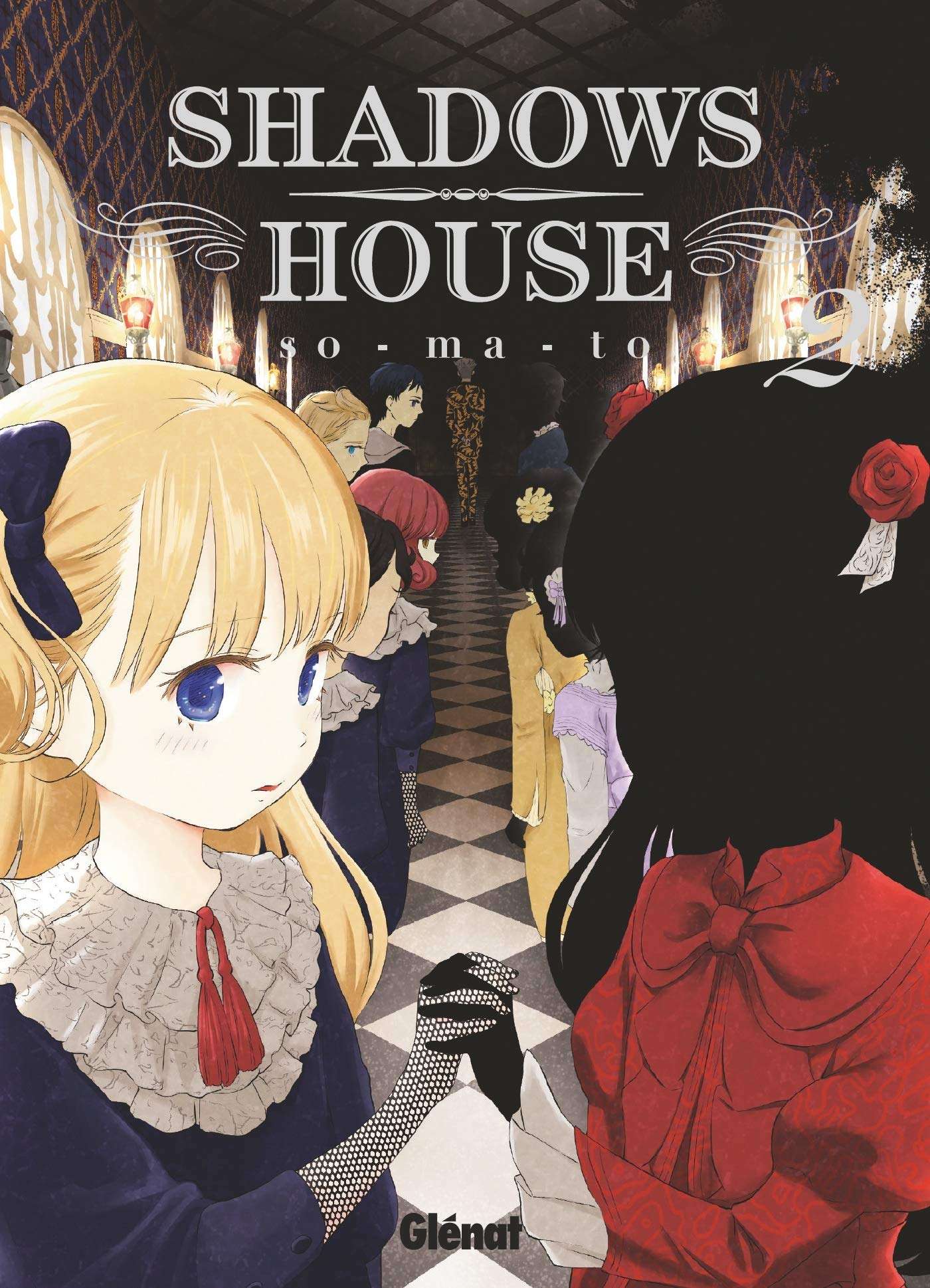
Known for their pitch-black appearance and tendency to emit soot when agitated, the Shadows live in a massive manor deep in the mountains, far from other humans. Almost as soon as a Shadow child reaches full age, a Living Doll is assigned to them. The Living Doll acts not only as their attendant but also as the face they would have had had their complexion been different.
Kate is a rather soft-spoken master of Emilico, the newly created Doll. Emilico does her best to fulfill the needs of her master, despite their differences in personality. Emilico begins to meet her fellow Dolls and their respective masters as she learns more about her role and duty and how to fulfill it.
“Do not fret over trivial matters,” says one of the rules to which all Dolls must abide. But how could the ever-curious Emilico do so in the face of the deep secrets that the Shadows House holds?
This show gives you your basic extroverted and introverted duo, which is really enjoyable if they have a good dynamic. On the one hand, we have the bubbly and clumsy living doll Emilico and on the other hand, the calm, mysterious and intelligent shadow Lady Kate. Even though they are opposites, they get along quite well.
The story of Shadow’s House doesn’t miss to captivate its audience within the first minutes of the anime. Usually, when you are really looking forward to something, it’ll most likely disappoint you. However, that’s definitely not the case when it comes to Shadow’s House.
47. Udon no Kuni no Kiniro Kemari
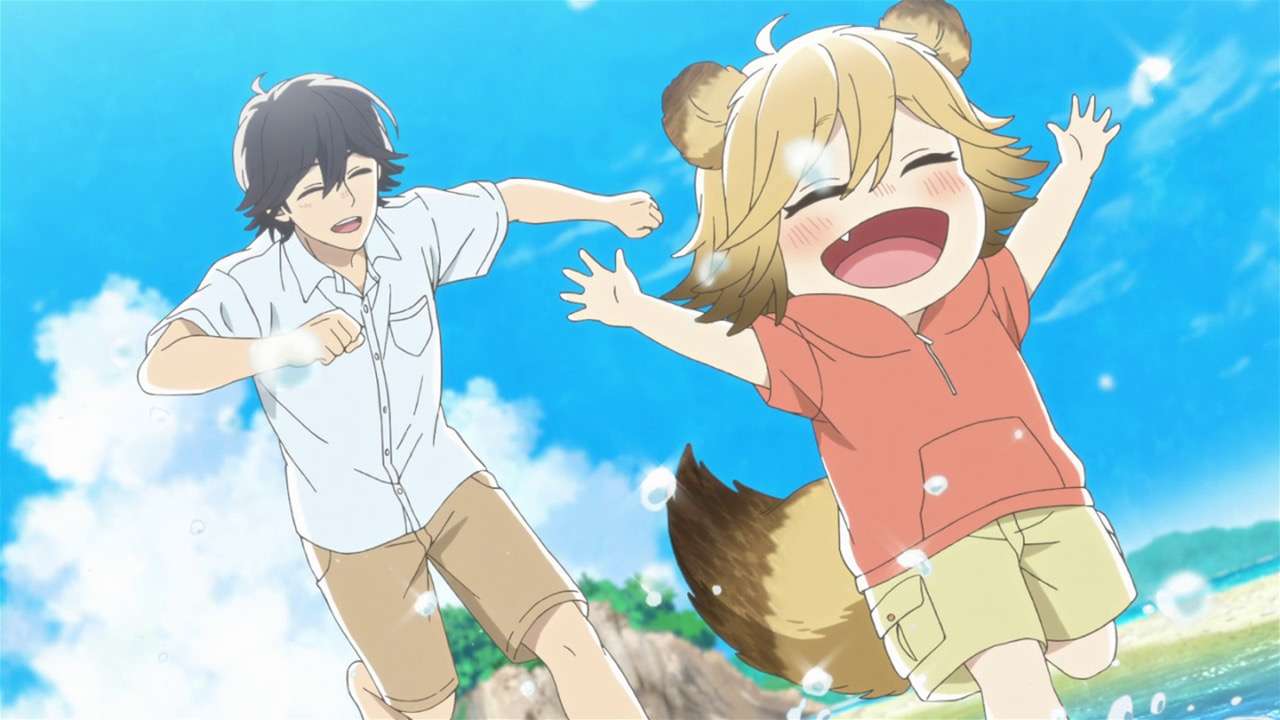
Souta Tawara heads back to his hometown of Kagawa after a break from the hustle and bustle of Tokyo. Despite his parents’ absence, his former home and family-owned udon restaurant serve as a reminder of the times when his family was still together. As Souta recalls his childhood, he enters the udon restaurant and discovers a grimy boy sleeping.
Initially, Souta thinks nothing of the chance encounter and provides the boy with food and clothing. However, the boy is suddenly adorned with furry ears and a tail! The nameless boy turns out to be the rumored shapeshifting tanuki living in Kagawa for a long time. Seeing how lonely the boy has been, he decides to adopt him and name him Poko.
As he spends time with Poko in Udon no Kuni no Kiniro Kemari, Souta remembers his own past, where he left for the city, and the relationship he had with his father.
It is the characters that make this genre shine, and this series does a fairly good overall of portraying them. All characters from the cast feel refreshing and unique, and most importantly, memorable due to those features.
Souta and Poco’s story is heartwarming, to say the least. The relationship between a web designer and a shapeshifting tanuki unfolds over the course of twelve episodes as they interact with characters from rural and urban environments.
It conveys a general message of familial love and bonds, but it is not limited to conventional families but includes found ones as well.
48. Heion Sedai no Idaten-tachi

The existence of mankind was threatened by terrifying demons eight hundred years ago. Humans, on the verge of extinction, prayed to their gods for help. As a result of these desperate pleas for salvation, battle deities known as the “Idaten” emerged. With their unnatural strength and endurance, the Idaten defeated the demons, and an era of unprecedented peace was finally achieved.
Since the present generation of Idaten have never encountered demons before, they are unaware of their brutality but have instead lived peacefully. Rin, the last remaining Idaten from 800 years ago, teaches the new Idaten how to survive in a time when they seem to have lost their usefulness.
The misfit crop of gods are called to battle against their natural enemy once again when the tyrannical Zoble Empire resurrects a demon.
It starts off with a chaotic first episode that serves as an excellent introduction to the rest of the series with its unique art style. It immediately hooks you in with its psychedelic art style.
You get an anime full of action scenes and something that is both familiar and unique. It is easy to fall in love with the characters; you have a wide variety, from the main hero we all recognize to the deceitful villain. The story might seem simple, but that is actually what makes you fall in love with the anime.
Stereotypical characters, but not in a negative way. Despite following the basic personality format, they are still pretty enjoyable.
49. Rozen Maiden: Ouvertüre
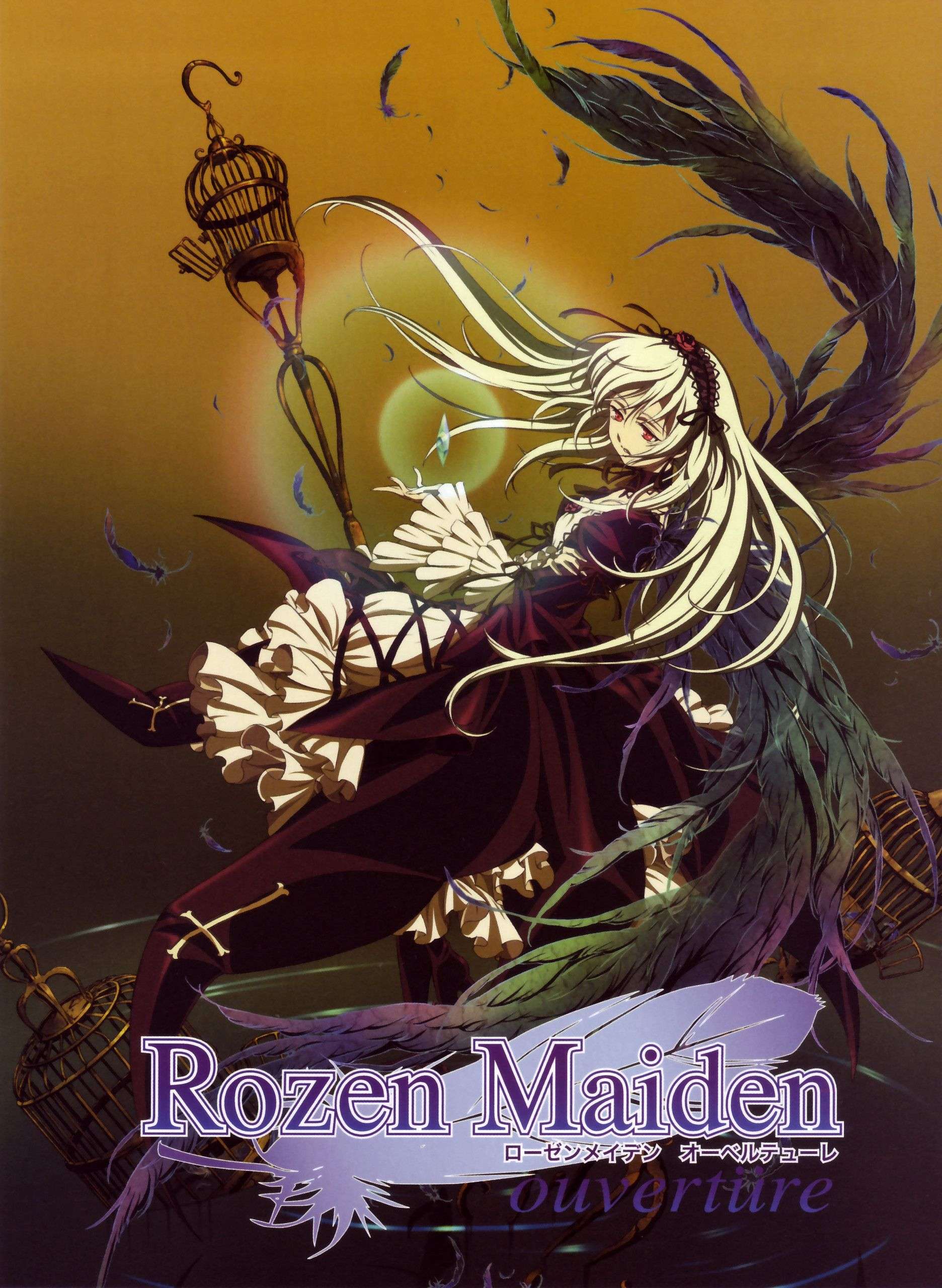
Jun Sakurada, traumatized by school, spends his days at home as a shut-in, buying things online, only to return them before the free trial period expires. His life is forever changed when he carelessly circles “yes” in the note that appears on his desk asking if he would wind something.
In the box is a wind-up doll, but this isn’t just any toy: after Jun winds it up, the doll begins walking and talking. With a haughty attitude, Shinku introduces herself as the fifth doll of the Rozen Maiden collection, a collection of dolls created by the legendary dollmaker Rozen.
To win, these sisters must compete in the Alice Game with the help of a human. The winner is Alice, a real girl who deserves to meet their creator.
Jun’s life becomes more complicated than he ever imagined as more sentient dolls move into his house, and an old foe from Shinku’s past makes her appearance.
Jun’s story about meeting the dolls is an action-packed, emotional, yet humorous one.
Rozen Maiden’s characters are one of its strongest points. They all possess their own unique characteristics. Jun, the main character, is a traumatized, secluded boy who enjoys buying supernatural items.
With the story progressing, however, one will see how he changes as a result of his interactions with the dolls. In terms of their own personalities and traits, the dolls themselves are pretty unique.
50. Hourou Musuko
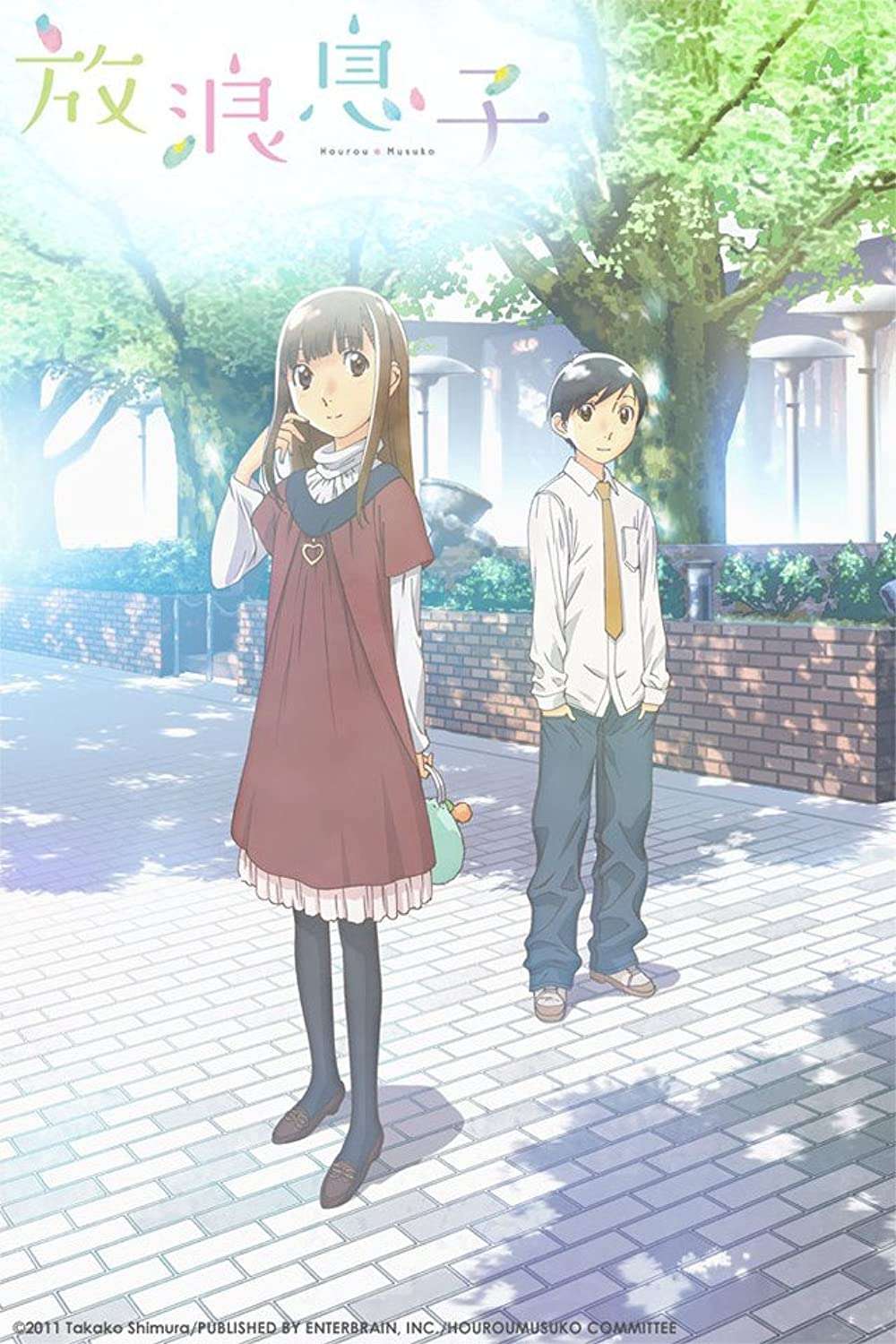
Shuuichi Nitori is considered one of the prettiest girls in her fifth grade class, but she is actually a man, much to her dismay. Fortunately, Shuuichi has a childhood friend with similar feelings of discomfort related to gender identity: the lanky tomboy Yoshino Takatsuki, even though she is biologically female.
They share a similar secret and find solace in one another. However, their lives become more complicated when they must cope with the unfamiliar waters of a new school, make new friends, and maintain old ones. They must confront the harsh realities of growing up, transexuality, relationships, and acceptance despite nearly insurmountable odds.
Hourou Musuko tells the story of Shuuichi and Yoshino’s attempts to find themselves through puberty, making friends, falling in love, and facing some very real and difficult decisions.
There is an engaging twist on everything, even as it rests on familiar tropes and archetypes. You will be flabbergasted by Hourou Musuko if you think love triangles are the most boring trope. The love triangle situation becomes even more complex and captures the viewers’ attention. The dramatic and slice-of-life situations are there for a reason: to characterize. They are not redundant, and everything feels well-placed.
The characters are realistic in every way. It’s easy to see why Nitori and Takatsuki are some of the best written LGBT characters out there; they both act like real people in real situations.
